Welcome to the 2018 BASF Innovations in the Field. This yearlong program is designed to showcase four progressive farmers and their use of technology and agronomic practices to enhance their return on investment and profit potential. Check back each week for new blogs and videos from the farmers as they share their experiences and crop management decisions throughout the growing season. Here is a brief overview of our four participants.

There was much to learn over this year. The more research you do on your own, the more you can innovate on your farm and determine if what you are doing or not doing is making or costing you money.
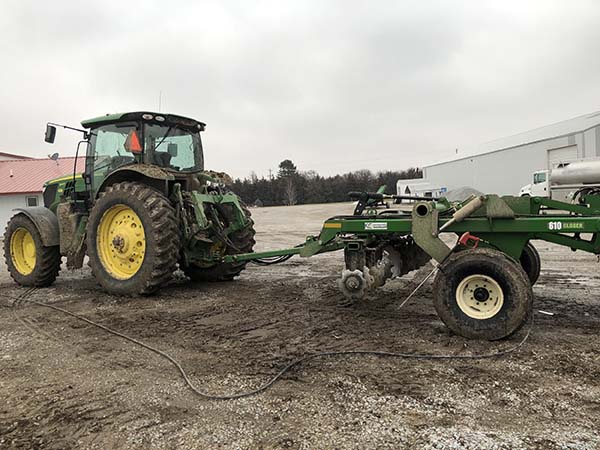
|
All the field work we were able to get accomplished this year was to get two-thirds of our tracks closed. We were going to experiment with cover crops, but we didn't even get around to getting that planted this fall.
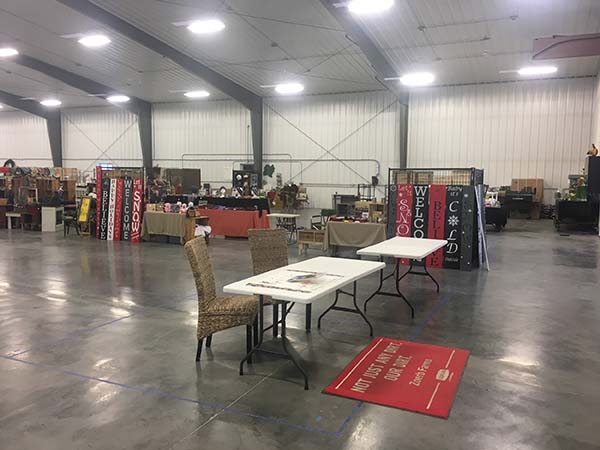
|
My parents host a craft show for the last six years now on the Sunday after Christmas. It takes us three days to get the shops post-harvest cleaned for the event. We were scheduled to have almost 90 vendors this year, but some had to back out because of the weather we had that weekend.
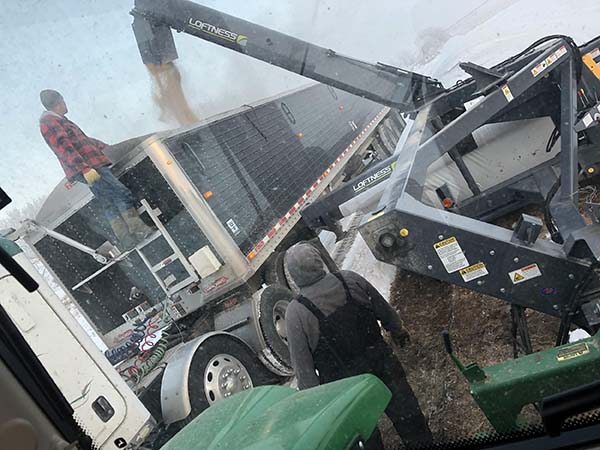
|
We have started bag removal this year as well.
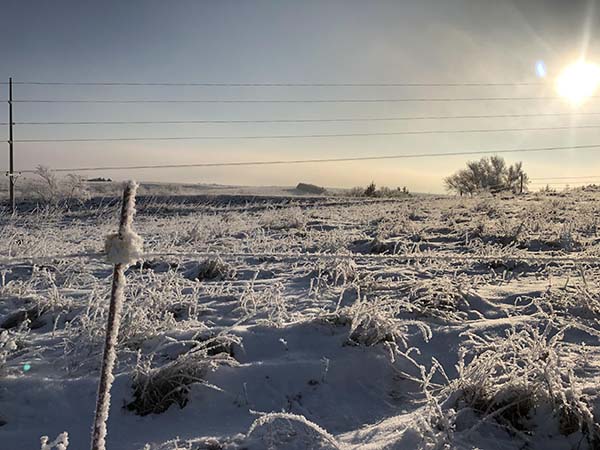
|
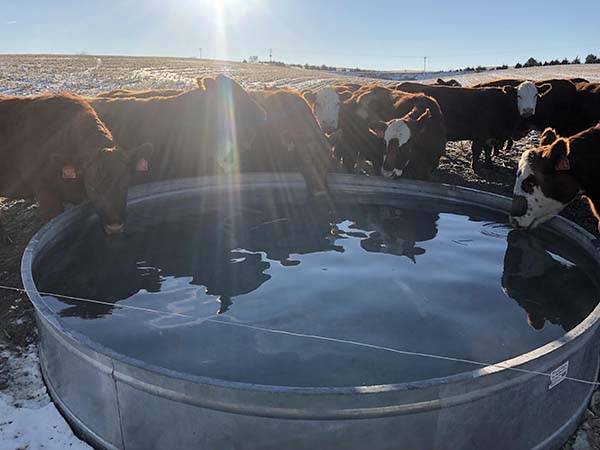
|
Also, it is back to the time of checking the cows out on stalks. And some cold mornings.

|
My wife and I had the opportunity to attend the DTN Ag Summit in Chicago this year. If you ever have the chance to attend this meeting I highly recommend it. I found the main speakers to be very good and the breakout sessions to be very informative as well. It is also a great opportunity to network with farmers from all over the country. There were insights on working with multiple generations, planning for the future, the Secretary of Agriculture US-China relations, innovation and diversification meetings, marketing outlook and understanding, weather modeling and outlook, a futuristic look at ag, blockchain, meetings for farmers under 40 and over as well, breakfast roundtables on more than 20 topics each morning, opportunity to meet with some of the biggest companies in ag and get your opinion to people higher up than your local rep. And here is plenty of time to see the city like this view from the 95th floor of the John Hancock building. Or to get some pizza.
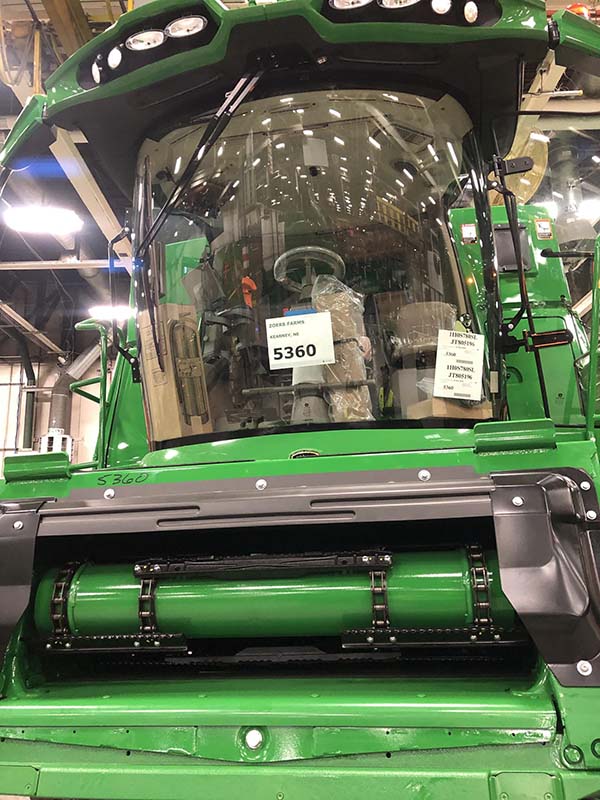
|
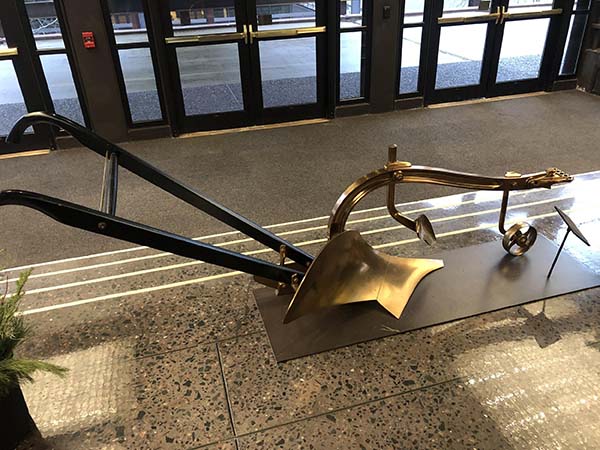
|
My mom and I were able to go to Moline and do a Gold Key for our new combine, which is also an experience that I would recommend going on if you can. Dad wasn't able to attend because he had the prior obligation of high school girls basketball assistant which he has been doing for10 years now.
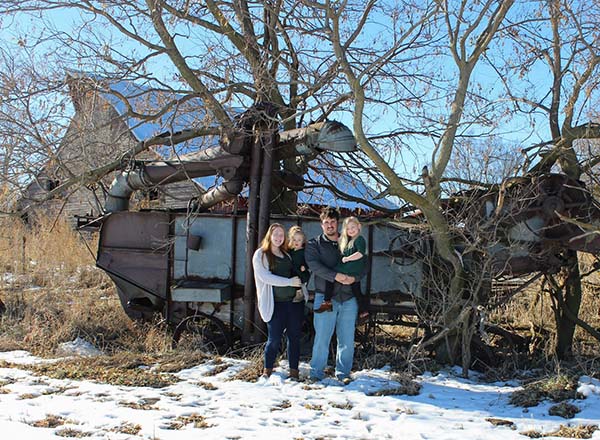
|
From our family to yours we wish you a Merry Christmas and Happy New Year. And thanks for following along.
Harvest seemed to be quicker this year with two machines especially once we started them both on soybeans. It also made getting some competitive plots out easier since one machine could roll on a normal field while dad and I picked the plots.
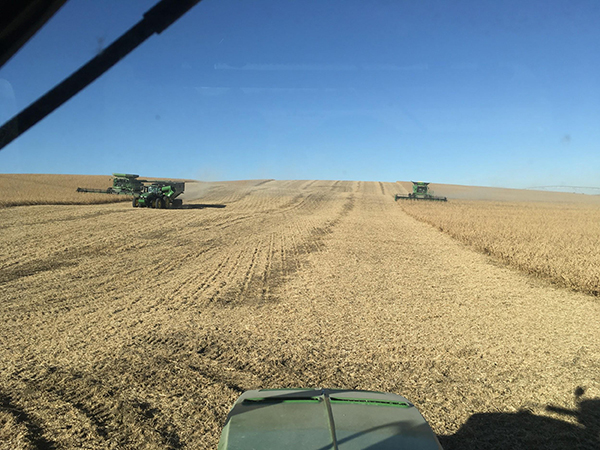
|
Also, a side note, when you are trying to pick side by sides is beneficial to remember if you are running your 35- or 40-foot head. Good thing for replication.
We are right on Highway 2 in central Nebraska, so the sum of the data we collected on soybeans may not pertain to you. But we found that in most cases there was not much difference between population from 100,000 to 160,000 is a twin row environment. Also when I would shut off the in furrowed, there were slight decreases in yield. When we compared twin rows to singles, every test was a 140-pound difference on 1.85 acres. We also probably left a bushel in the singles because they were lodged more and the row directions.
I'm not sure about your area, but in soybeans, there are a bunch of low yielding plots this year it seems. Many of the plots we were sent were in the 60 to 70 range with the higher management ones closer to 90.
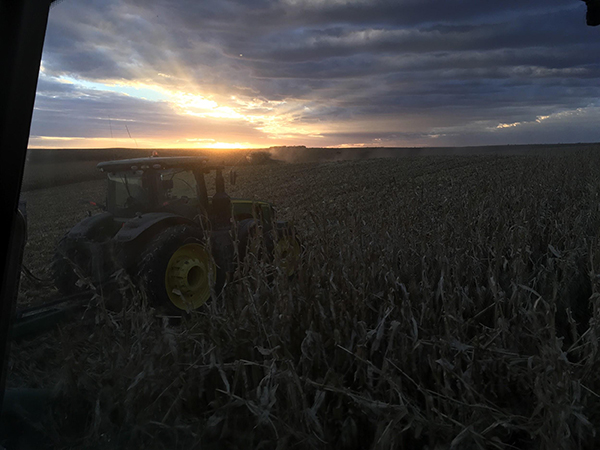
|
I didn't get to run a combine in soybeans this year, but I did log many hours in the seat in some corn. There are times when getting good irrigated corn away from two combines became an issue, but we have several ideas on how to increase efficiency next year.
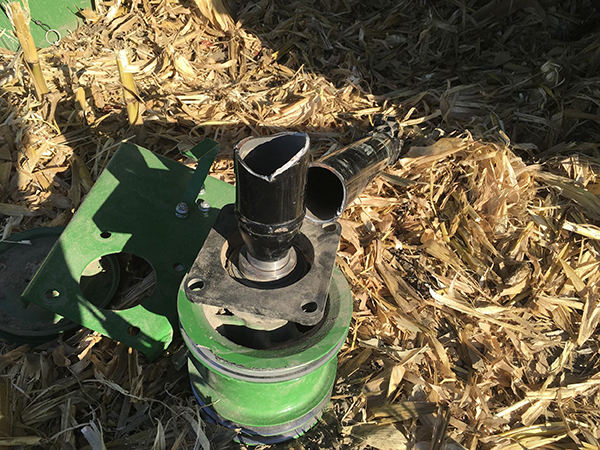
|
Harvest breakdowns were also plenty this year. This is the main drive shaft that drives all the belts on the right side of the combine. Dad said it made some noise when it went.
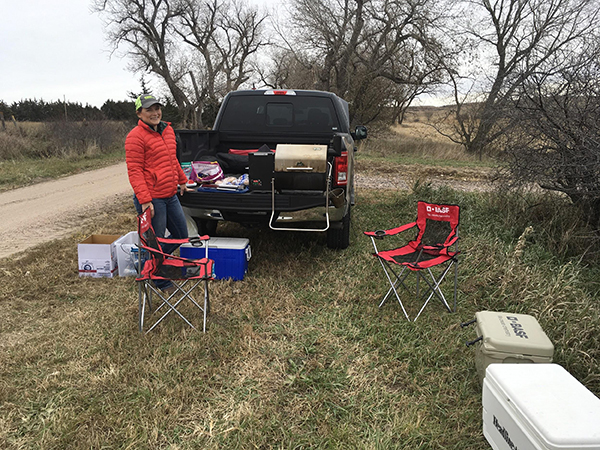
|
I would like to thank our BASF rep Megan Bode for bringing the grill to the field for lunch one day and delivering some hot food.
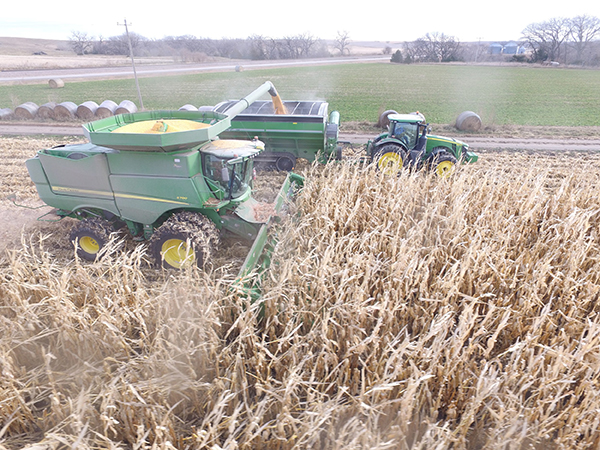
|
I finally had time to get my drone up for the first time on the last field.
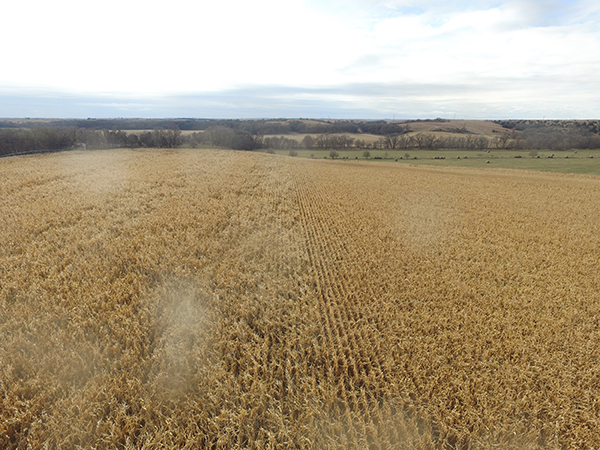
|
In this field hybrid, population, and if it was singles or twins had an effect on stand. The one to the left that is crashing hardest Was better in the end by 5 bushesl or more. This year singles out did twins in corn.
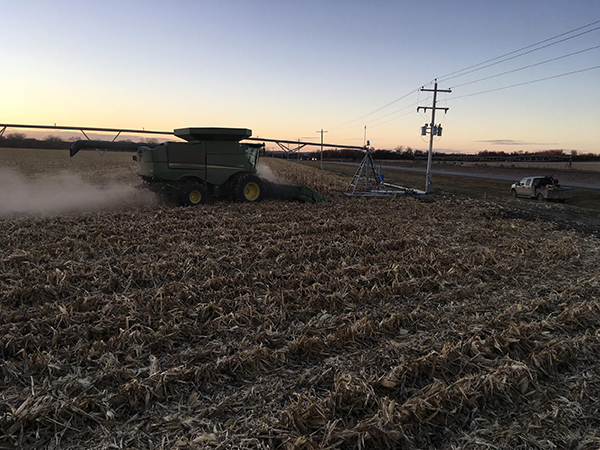
|
Harvest 2018 wrapped up early in the evening on Election Day, so everyone had plenty of time to go do their civic duty.
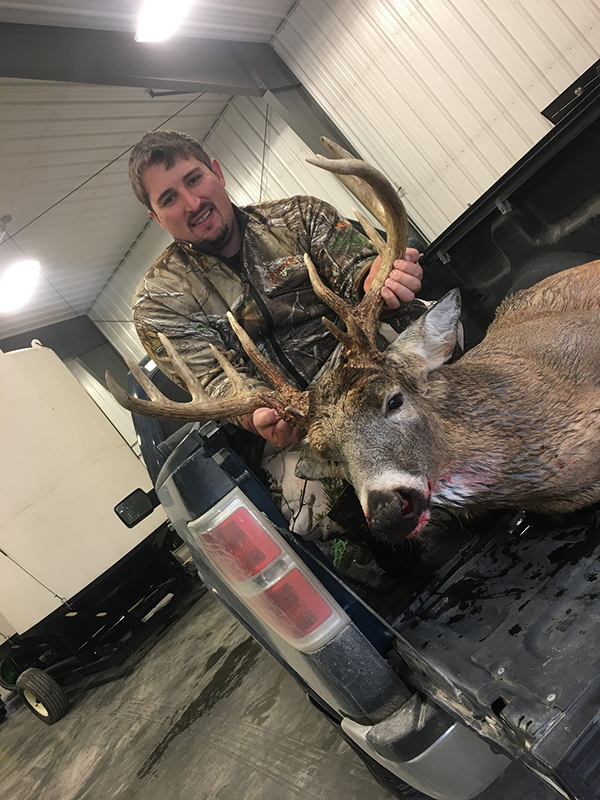
|
Also, deer season started the 10th, and I was lucky enough to tag out in the first 30 minutes with the biggest deer I have ever taken. My wife even says I can maybe mount it.
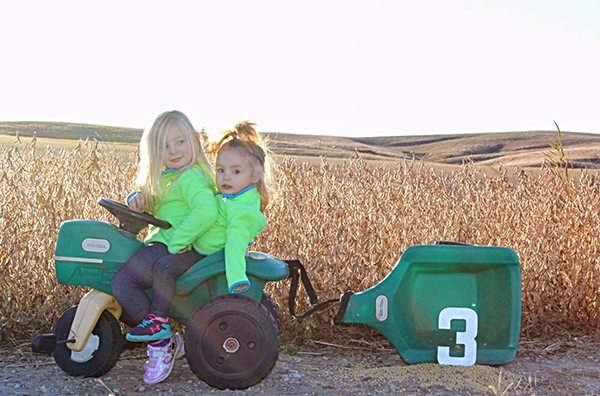
|
We also had some big news to "spill the beans" on. We are expecting our third in late March or early April this coming year.
So harvest started mid last month but got rolling good for a bit until the recent weather just arrived that has most of the corn belt stopped. We have had 2 inches in the last three days and a chance on Friday again. It could be Monday 14th before we get going again. And a day or two after that on beans. The ground is very wet. We are currently 33% done with all crops but not very far on soybean harvest.
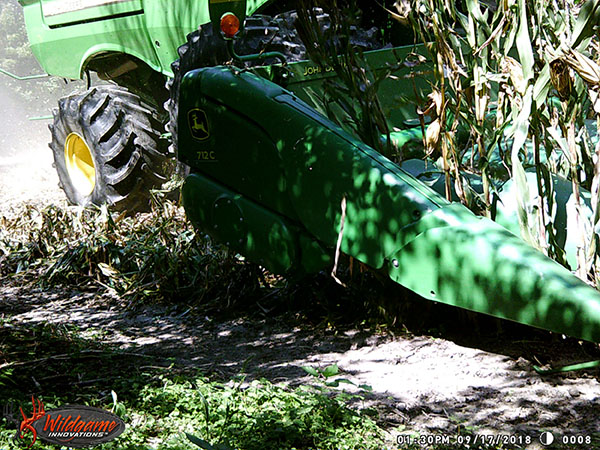
|
Fall is also one of my favorite times of year with deer season coming around.
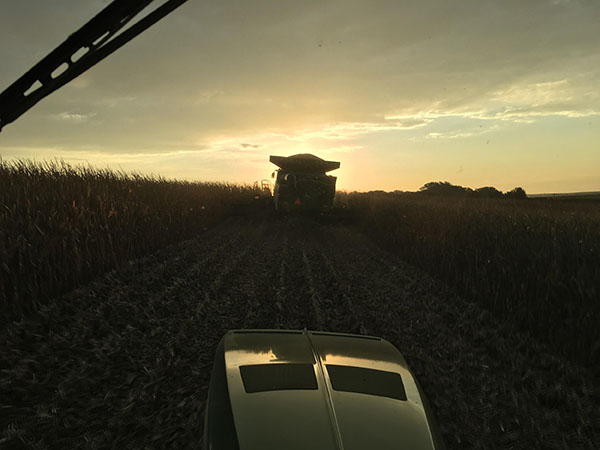
|
Harvest includes many early mornings and late nights. In the cart. When we run the scales in the carts is makes doing in field checks on tests very easy.
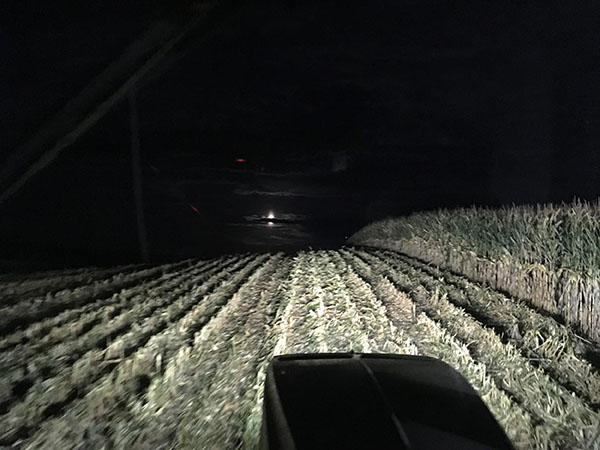
|
This is one of our very large hills that we farm in custom work for one of the largest hog producers is in the state.
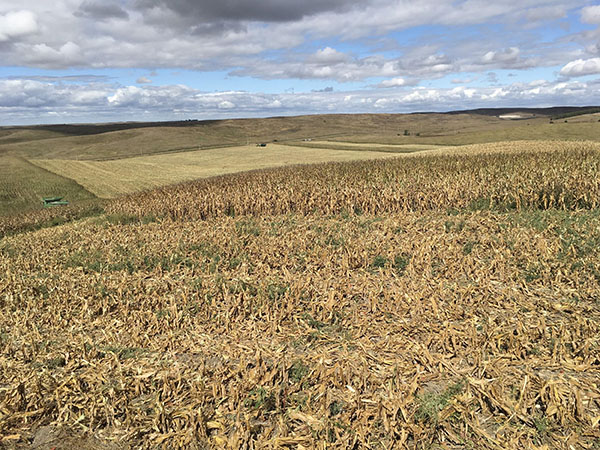
|
I am getting lots more experience in the combine this year than I have had in the past 5. I actually didn't even get the chance to run it last year with the down corn. But this year with running two combines dad has been in one to do soybeans while I jump in the other and run it in corn.
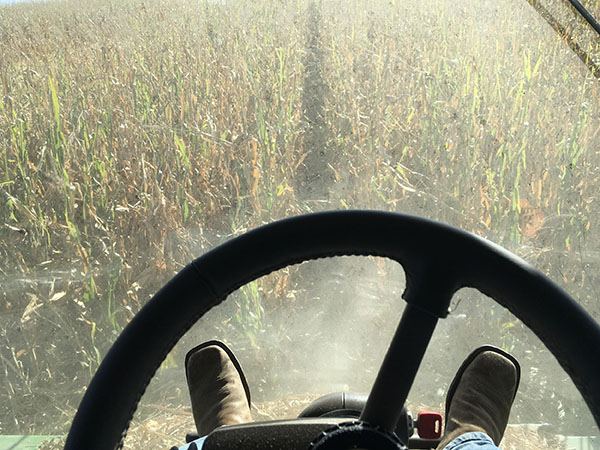
|
This is one thing that concerns me with the extended grain fill period, and now rain we are going to have stalk rots come in and the ears pictured above are from an ear that was tipped down and had shut down early while the other was still upright and fined properly. There was a late August hail on this field and it allowed for this. We estimate it cost us 30-40 bushels over the field.
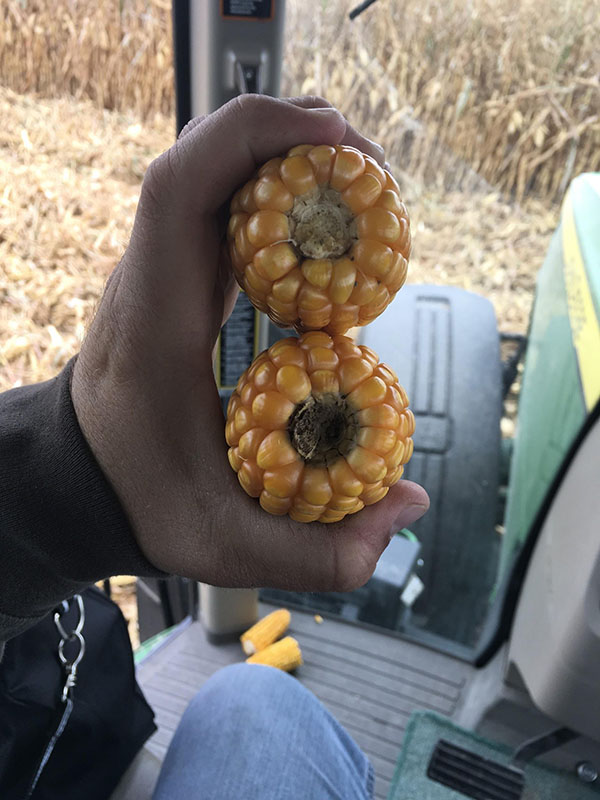
|
This is where we currently sit. As well as most of you. I hope all goes well once we can get back in the fields, and that the rest of your harvest is quick and prosperous.
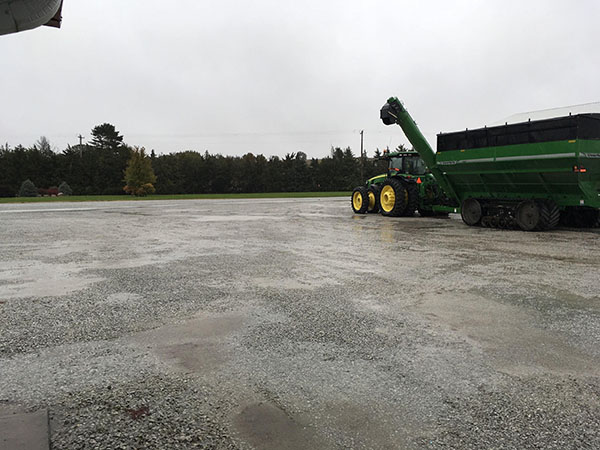
|
Not much has happened on the farm since the last post. Lots of getting ready and then starting on Friday the 14th. We did get a good late season rain that led to us not needed to water very much the past couple weeks.
This normally happens every year on this field, but this is one row, ¾ mile long with zero ears on it because of deer. On a normal year, the first couple rows would just be eaten off but the other grasses came on good early this year, and so the deer stayed out.
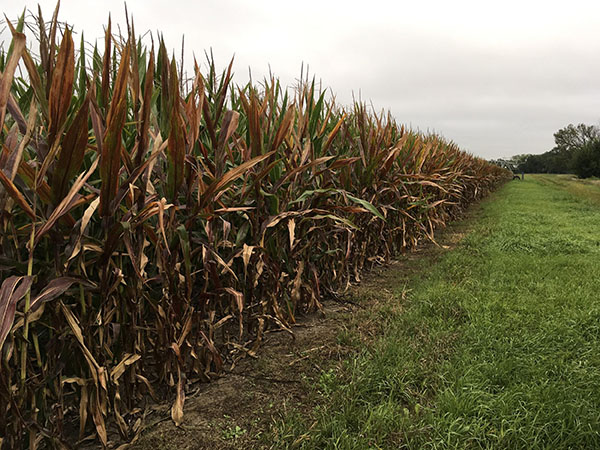
|
Just a couple pictures from our first day in some hailed short season corn coming out around 25%. We will be running a second combine this year on soybeans and a few days of corn when we can support it.
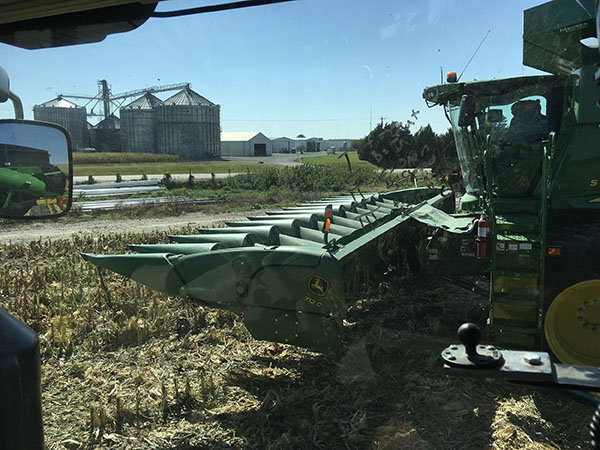
|

|
Have to share the first day of preschool pictures as well. She says she wants to be a farmer so we will see in 18 years.
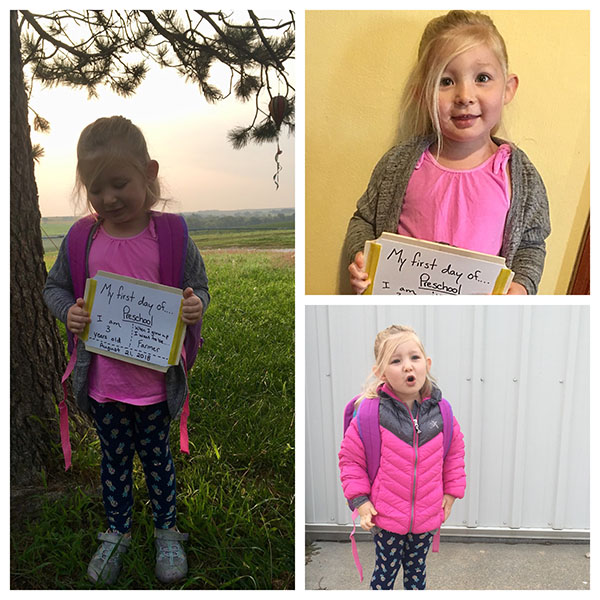
|
We have gone from pollination to early dent and pod set and elongation to R5 filling pods in our top nodes. I still expect harvest to be right after Husker harvest days around the weekend of the 15th. I have seen other places are two weeks ahead of normal.
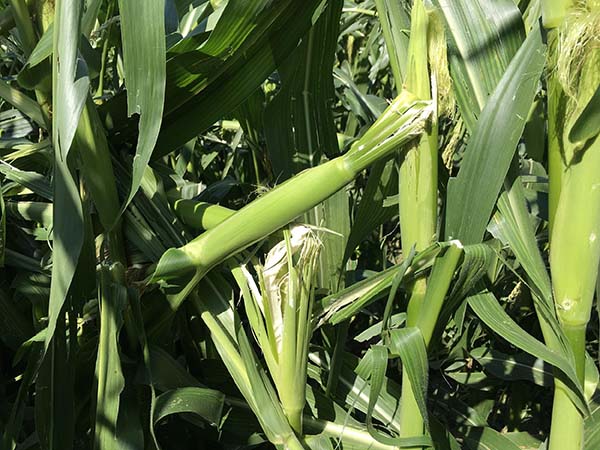
|
So just after my last post, we had a terrible storm come through and hit two quarters pretty hard. Between the two they averaged 40% break, the hailstones only broke the stalks that they hit directly on the node, leaf loss was not that severe.
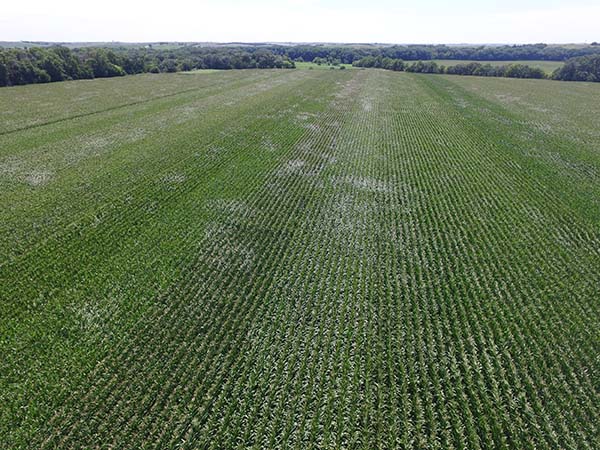
|
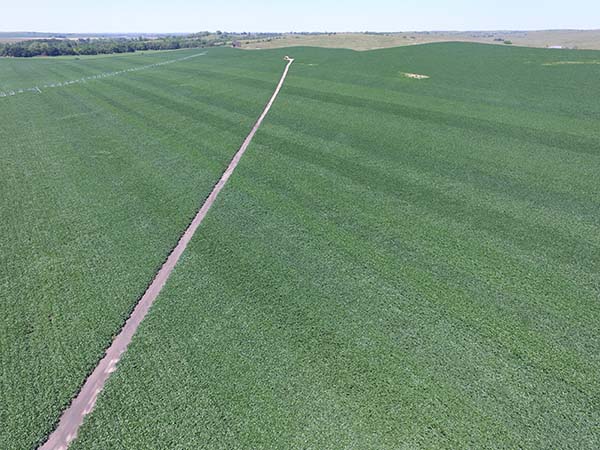
|
These are two of our simple plots. The soybeans are a multi-company plot grouped by company from low to high maturity. Our corn we plant ranges from 100 to 116 day in a normal year this year we have 99 to 118 in our competitive plot. The soybeans range from a 2.2-3.3 in the plot our normal range is 2.4-2.9.
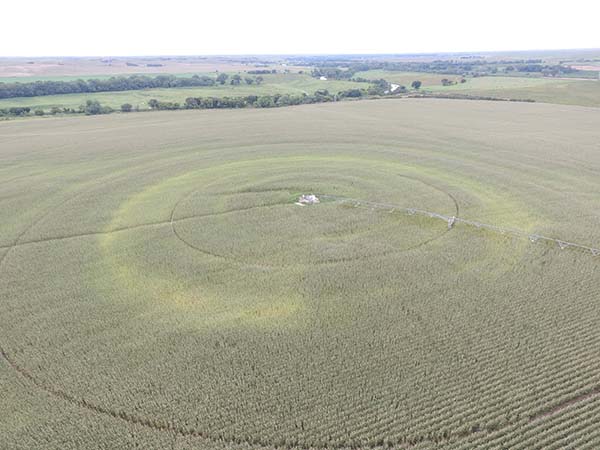
|
This is one of our fields and a prime reason I do not like drop nozzles on pivots, you can1t tell you have a problem until late. Hopefully, we can get some overhead sprinklers on this one in the fall that won1t plug when hog lagoon water pumps through them in season.
Some of the late season tests we are running are N applications on soybeans that we normally do but this year some pivots we are only doing half and doing it across the row. We are also trying out a BASF plant health challenge with a local spray plane service where we took a half section and treated half with a pivot and chemigation like normal and the other half with a plane. On the other quarter of the field, we stripped in several passes with treatment, and no treatment to see how much things we have been doing are really paying. We also did a few acres on a dryland field of soybeans that I thought had some potential this year but if we don1t catch some moisture soon, they could start to stress.
On a personal note, my oldest starts preschool next week, so this should be a fun experience, and I wish all of your families well, as you and your children head back to school and college.
This year we have been very fortunate with rains so far. Early on we watered beans to help with emergence and then to activate residuals. Our corn didn't need much early and did get a planned turn of N after it dried out enough between rains. We are just getting to the point where we have to start watering corn pretty hard with constant heat and to keep it from stress during this crucial early reproductive stages, we are due for rain this weekend, so we are trying to hold off on the soybeans to try and keep them from getting too tall early on us.
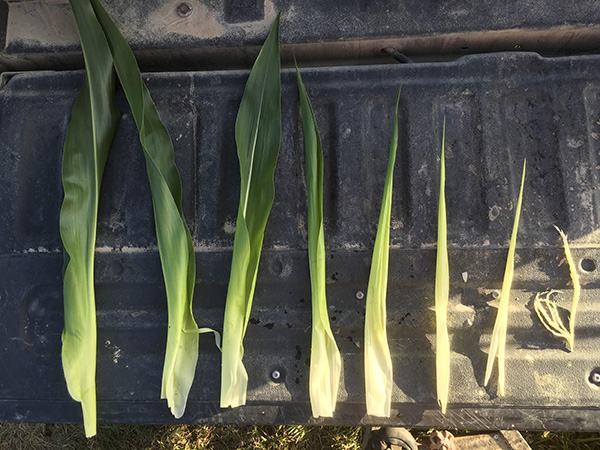
|
Lots of crop progress has happened here in the past few weeks. This is from a field a few weeks ago that is that will be tasseling this weekend.
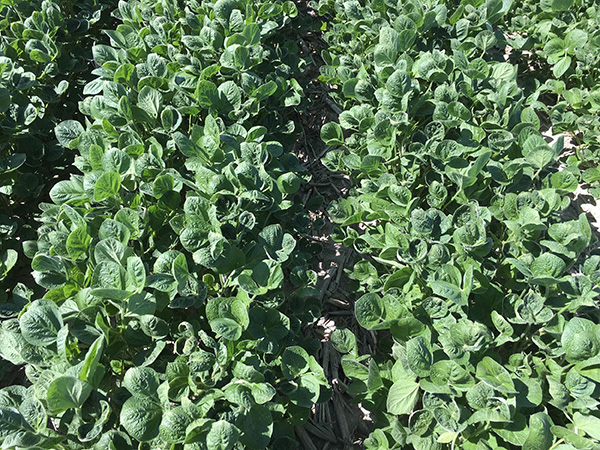
|
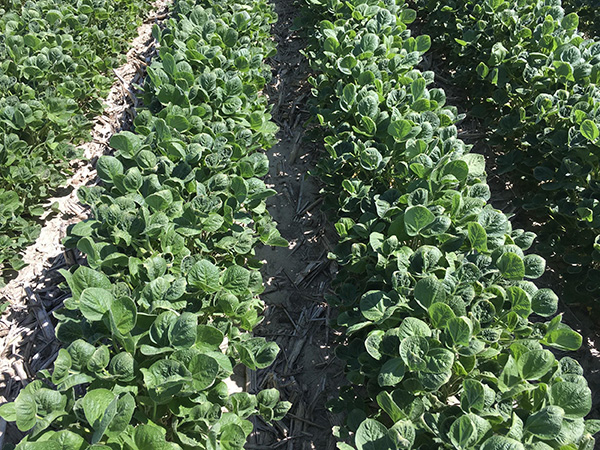
|
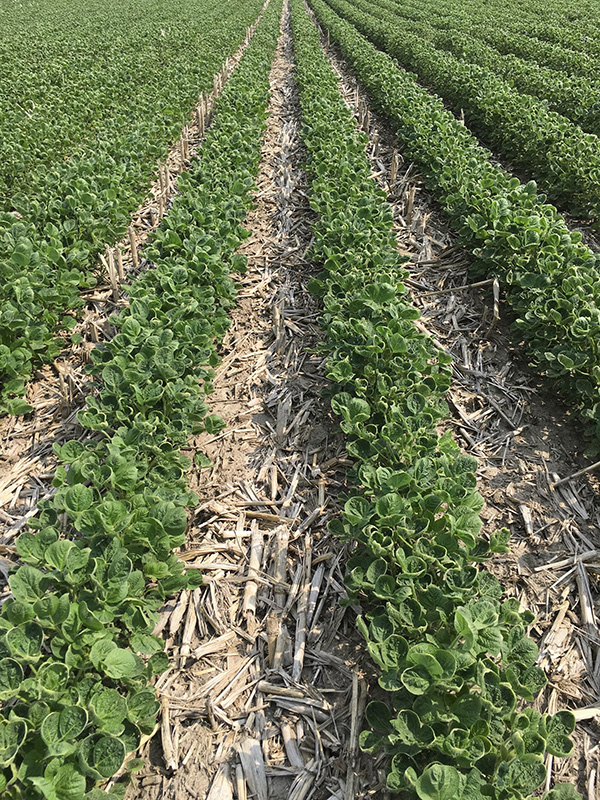
|
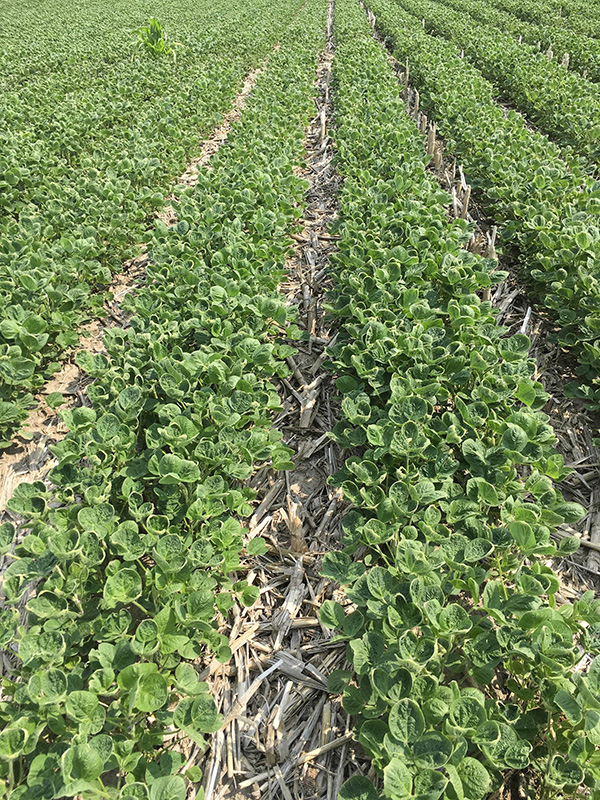
|
Here is a direct side by side of the twin row vs. 30" trial. Currently the soybeans are mid thigh high, and the twin row canopy is all but closed and the 30" are 8" from that. It is getting close to the point where I think people need to look at narrower systems of soybeans. Either twins, 20s, or 15s. Last year on our farm it was 2-3 weeks of more sunlight hitting the ground letting weeds get established, and water leave the ground. The top pictures are more recent.
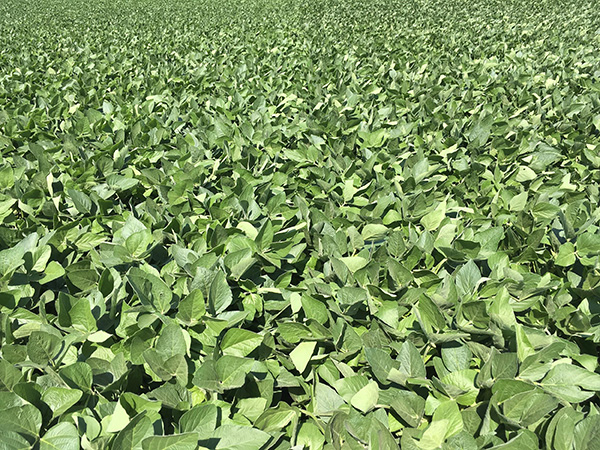
|
This is one of our plots of soybeans planted the 29th of April. Some of the plants out here are elongating pods at this point.
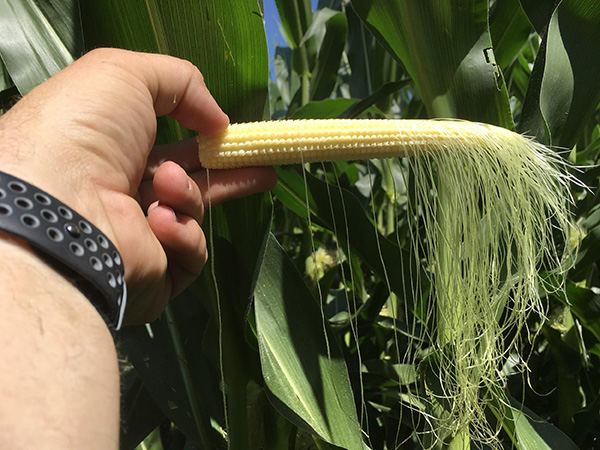
|
This is where our corn in our short season broad trial field is sitting. It contains five numbers from three companies in the 99-106 day range to see what would work for us in an early wet corn situation.
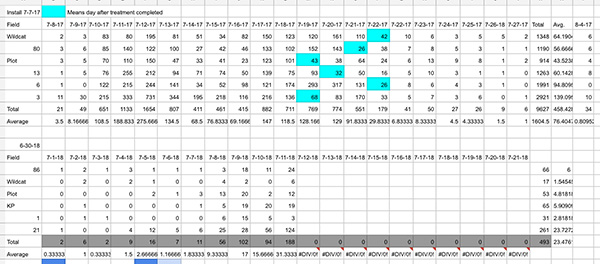
|
This is currently our largest concern right now in corn outside of bacterial leaf streak. Our western bean cutworm moth flight. It isn't acting like it did last year where it went very high very fast as you can tell from the top chart.
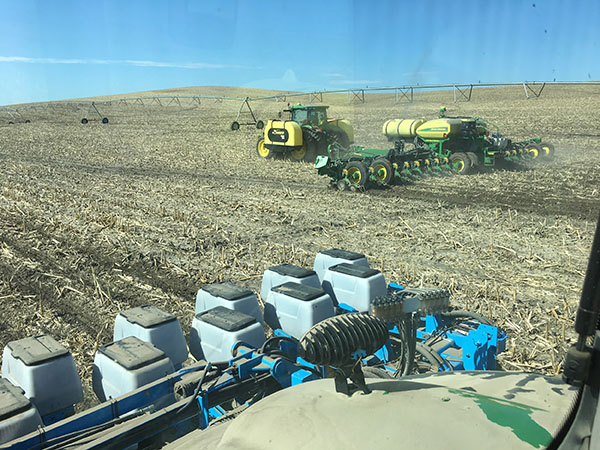
|
This is our last soybean field we had to plant so we brought over the 24 row straight 30 to compare to the twins that all the other soybeans went too. (Here is another picture of dad.) We wanted more trials like this but with time running short this is all we got. We could have really used an extra guy to keep the 24 row running while dad was in the sprayer staying ahead of three planters with pre-emerge.

|
The next day after soybeans were completed we did some side by sides with corn on two hybrids at some different populations to see if we can utilize the twin row on corn next year. Planting started April 27 for us and wrapped up on the 17th of May.
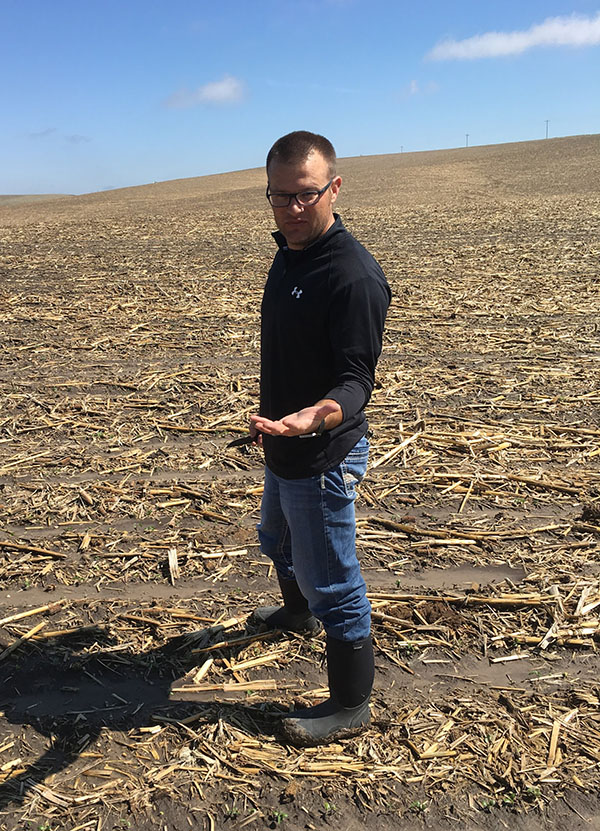
|
This is Eric our BASF rep. We are out in our first planted soybean field trying to figure out why we can't seem to get any stand while oust all the layer planted field are up and at unifoliate.
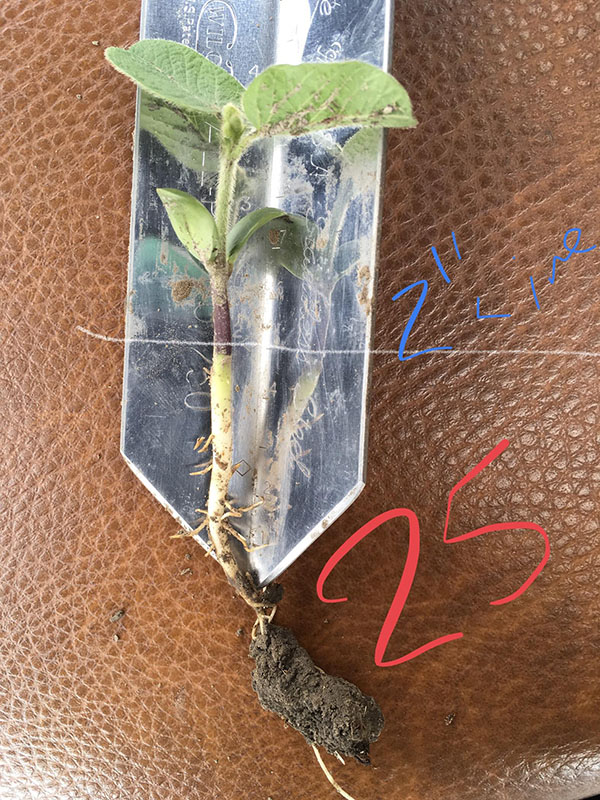
|
Here are some of our dryland soybeans. Planted almost 1 7/8-inch deep to get the seeds into moisture and they have good stands. Ignore the 25 that's just the field number.
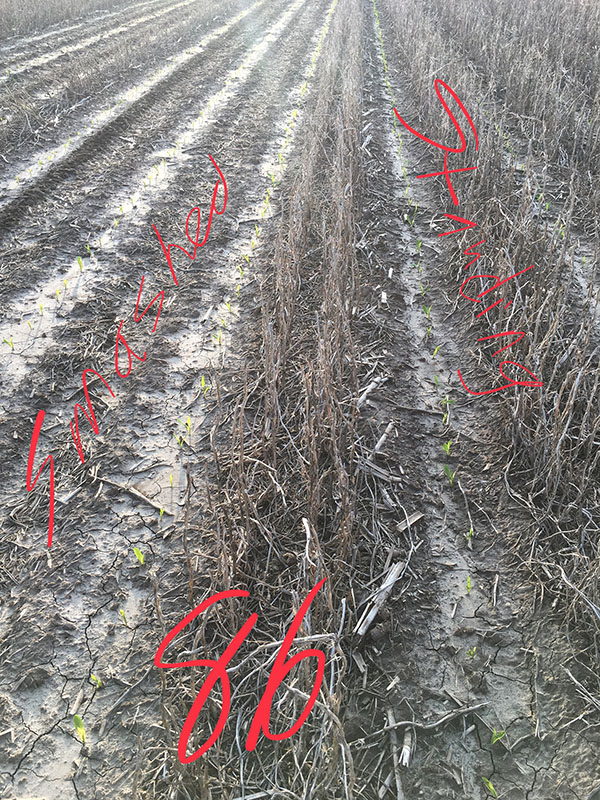
|
This is our corn coming up in our soybean field that was zeroed from hail. I was comparing stands from the tractor path to the shaded areas. The 86 is the year dad started farming it.
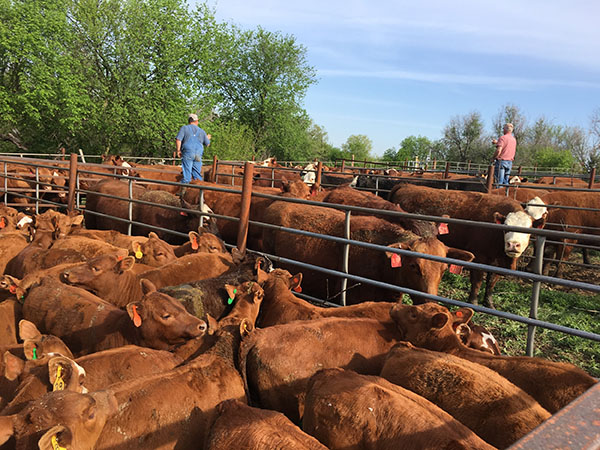
|
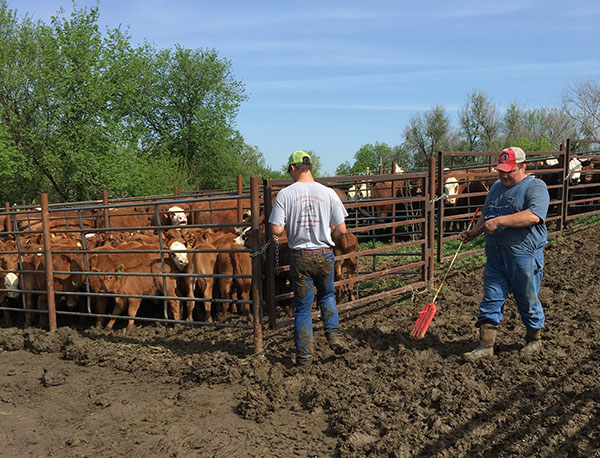
|
We also sorted pairs and took them to grass this month. Now that we have gotten some rain the pastures are growing well. The guy in the bibs is Jeff, the guy in the red is Shawn, they are our fulltime help. The kid that looks like he had a terrible accident is my cousin that my parents are the legal guardian of.
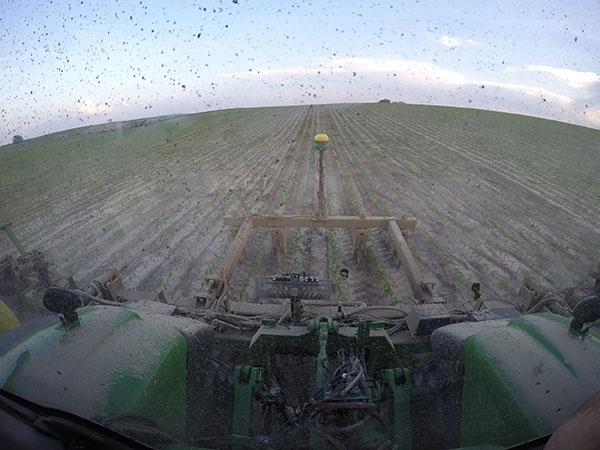
|
This is our current task. Running a 12 and 24 row coulter machine to side dress our corn. We band the fertilizer 8 inches off the row so the plants can get to it faster. We would like to utilize Y drops for this but haven't got around to it. We use the Orthman Tracker IV to help hold the line because we wouldn't be able to control this heavy bar without it in our rolling hills.
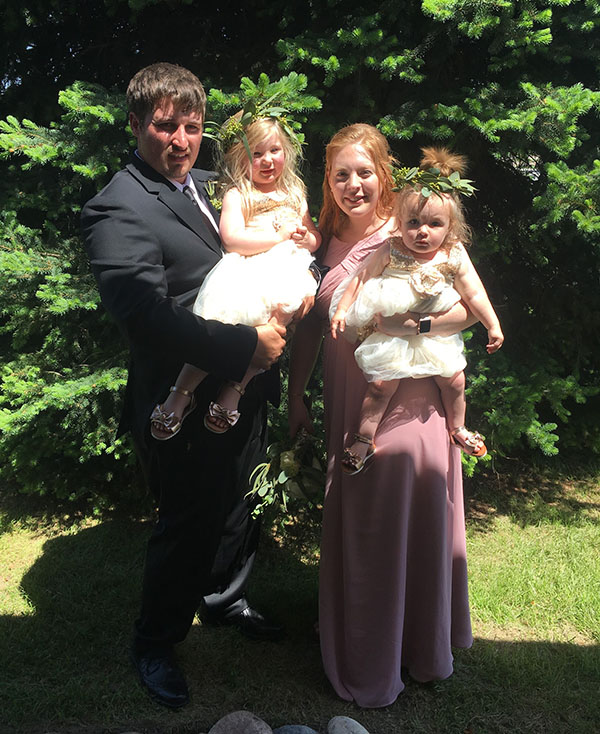
|
Our family had much to celebrate over Memorial Day weekend as my sister got married. Our girls were the flower girls and my wife and I were able to stand up with them in the wedding party. The wedding was in the front yard at my parents on a 93-degree day, as you can tell we were warm.

|
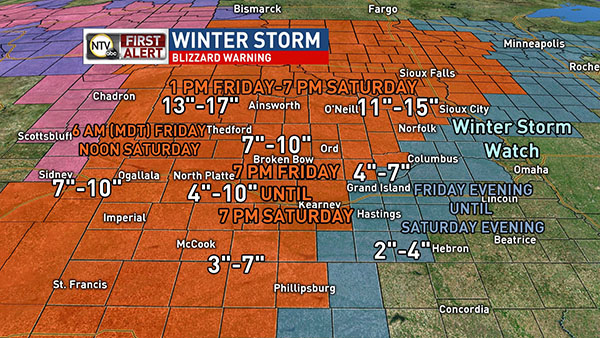
|

|
So this is the April 14th blizzard we received this year. It knocked out our power almost immediately, so we went to stay with my parents in their barn.
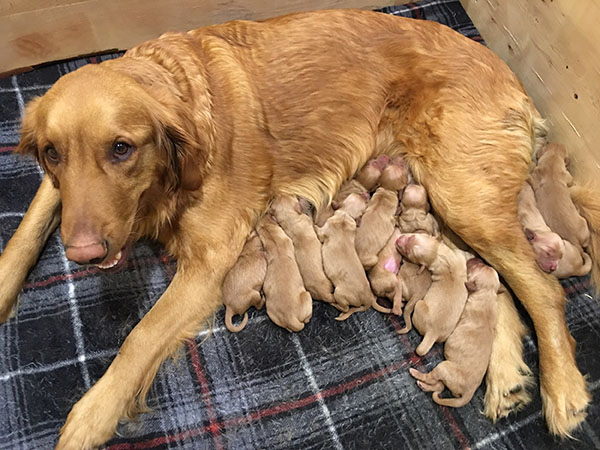
|
The bonus of staying there was that my parents Golden Retriever had just had a litter of 13 puppies seven boys six girls.
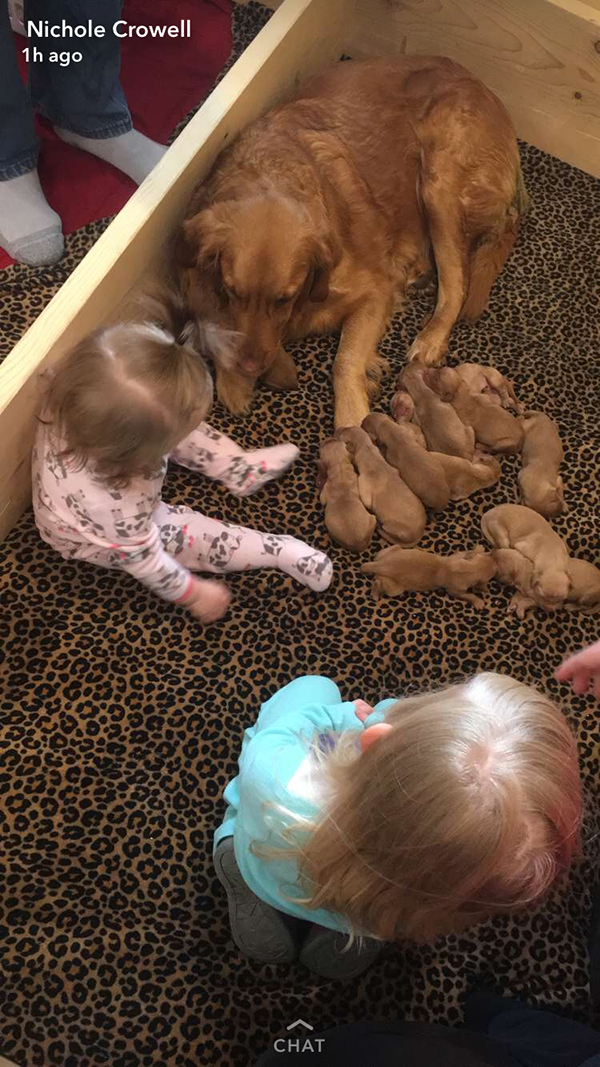
|
So this is basically what we did. Chill and have pillow fights with Grandpa Dale.

|
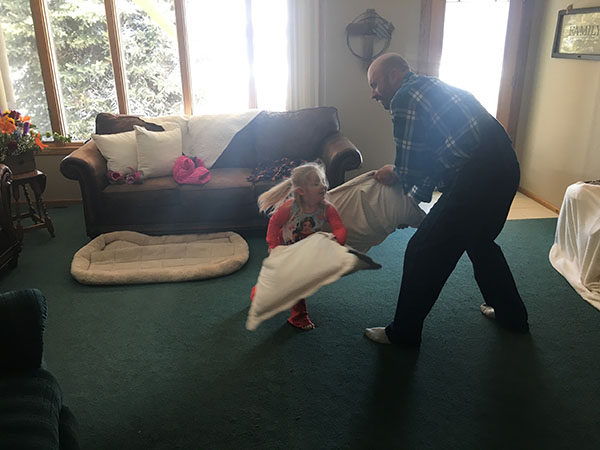
|
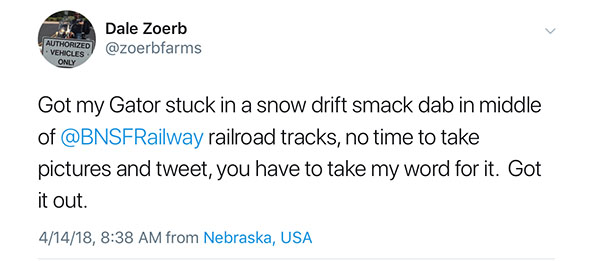
|
This also happened and was very scary because we had no cell service so I couldn't hear when he called, but I ran outside and got to the crossing right next to the house right as he got himself out. Later it is a hilarious story to tell because once it went, he rolled out of the side by side and onto his back like a turtle.

|
My oldest turned 3 in mid-April and my wife makes a great cake. She is big into unicorns now.
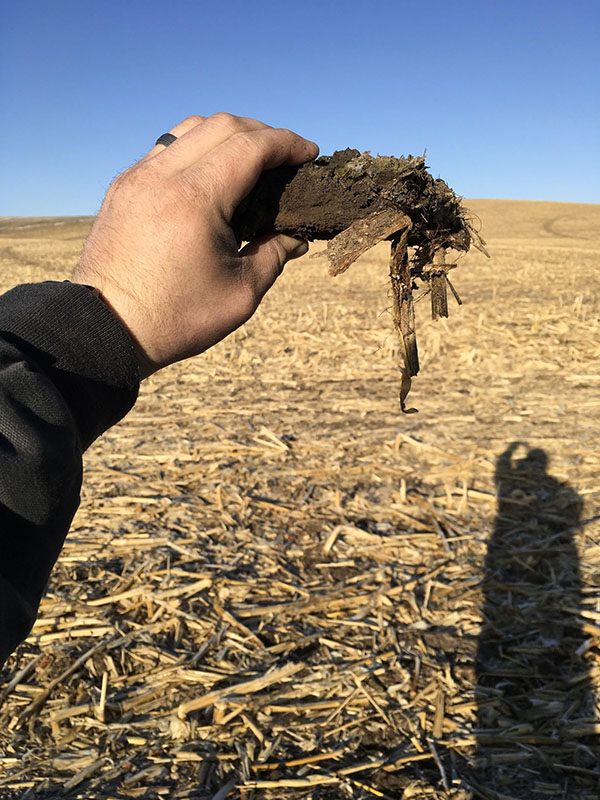
|
This is April 19th. And this is the frost left on the top of a field we still needed to strip-till. There were still drifts in the field in places as well. Were we are our planting dates for corn are April 10th for corn and 25th for soybeans.
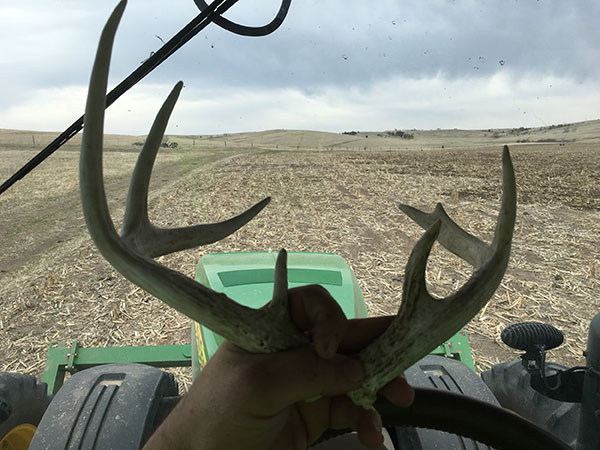
|
When I do the end rows of a field, I am always keeping an eye out for cool things like sheds. Found these hanging in a couple of trees close together.
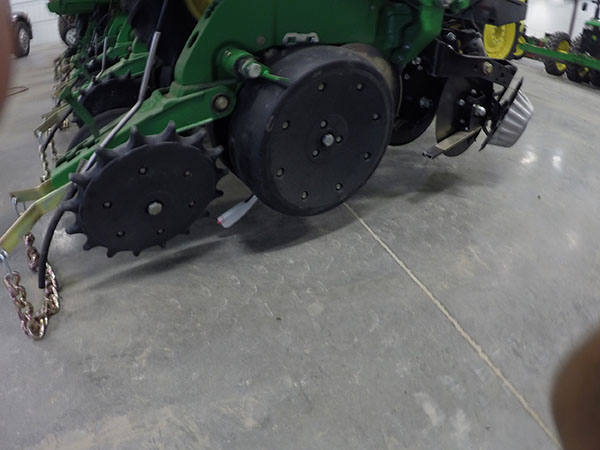
|
This is what happens to your research planter with furrow jets on it when you can't get it to pump the volume of water you want to put out for fertilizer. You switch back to a seed firmer.
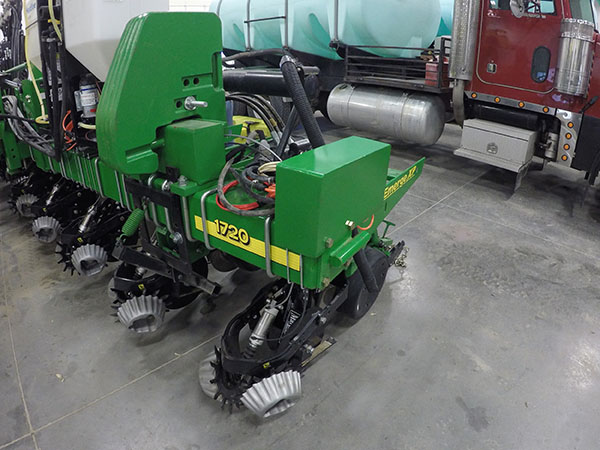
|
Here is a shield our guys built to protect our metered line from catching on anything. Here is a better picture of our line setup that was blurred last week.
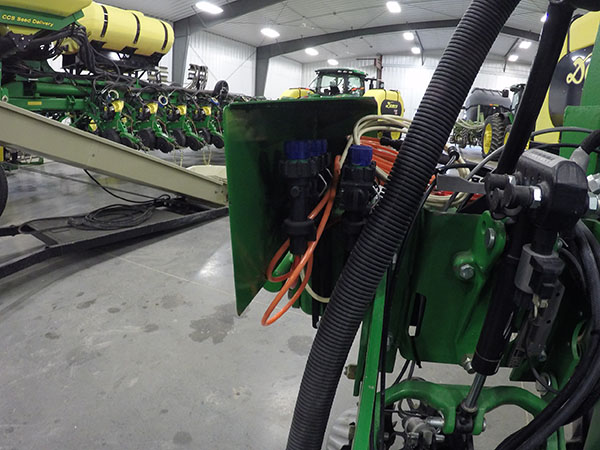
|
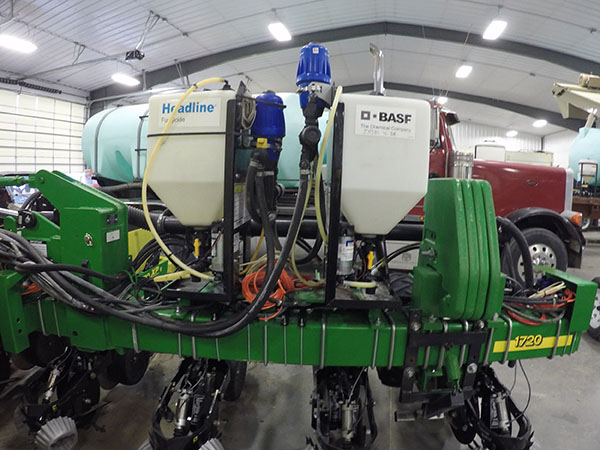
|
All three of our planters have a setup similar to this with dual tanks. In corn one for fungicide and other for insecticide. In soybeans, one is for Priaxor and the other is for a secondary in-furrow inoculation.
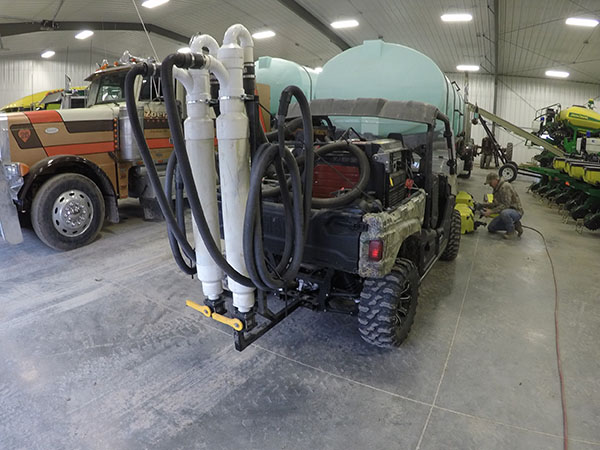
|
We are doing several plots this year so a good plot setup like this will be much needed. He has one big corn plot, an Xtend soybean plot, a liberty soybean plot and a few plots that we are really trying to push. That is our hired hand Shawn in the background getting the 12 row ready to roll. That is the planter that he runs except for when I'm putting in plots with it.
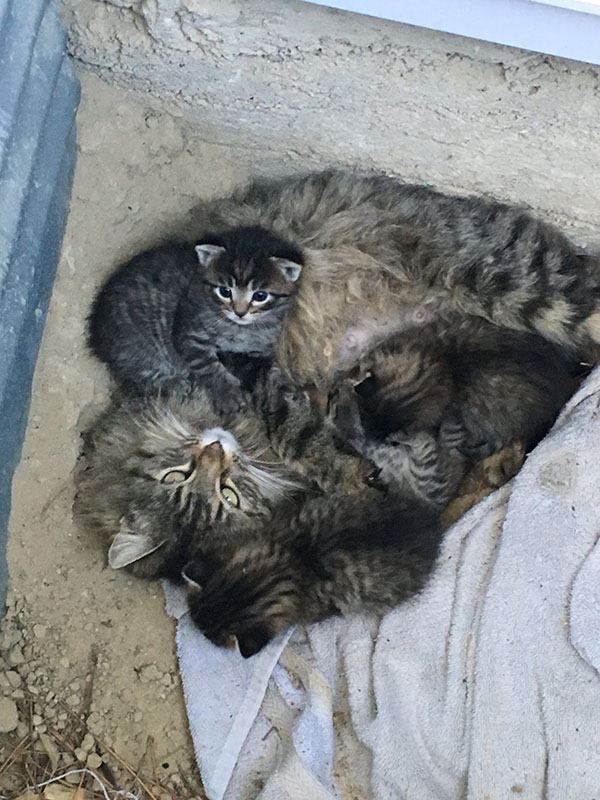
|
In addition to puppies at Mom and Dad's, we had a stray cat have kittens in our egress window, so the girls basically had a kitten terrarium to watch for a few weeks. Now she has a name, "Shine", and the kitties are chocolate, vanilla, strawberry, and sprinkles. We now also have a beta fish named Cracker. I'm not sure where my daughter gets these names.
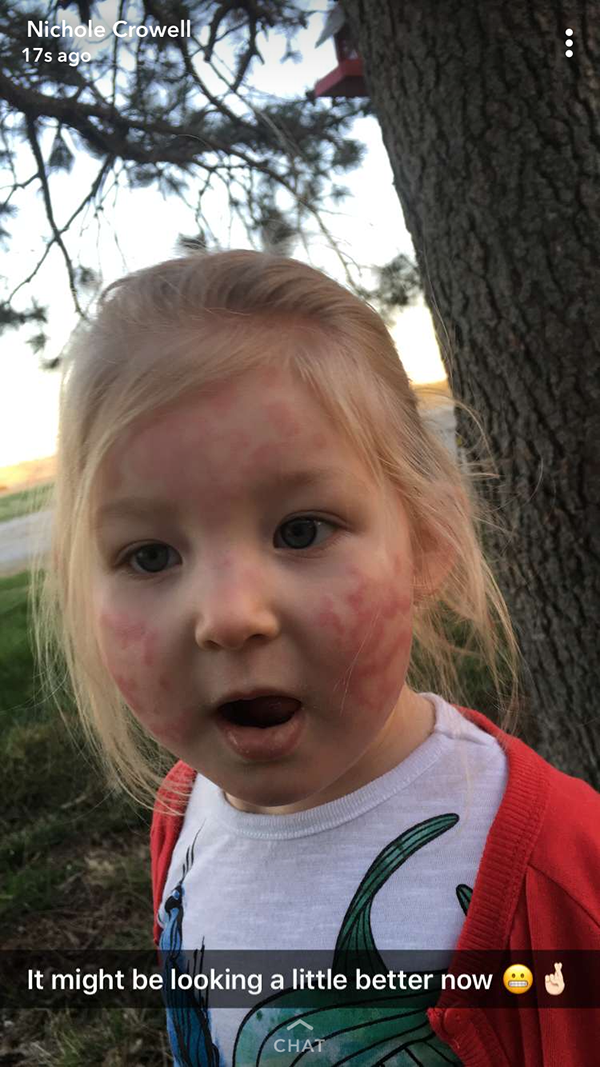
|
Our oldest had a small allergic reaction to an antibiotic. Her spots had spots. Very scary.
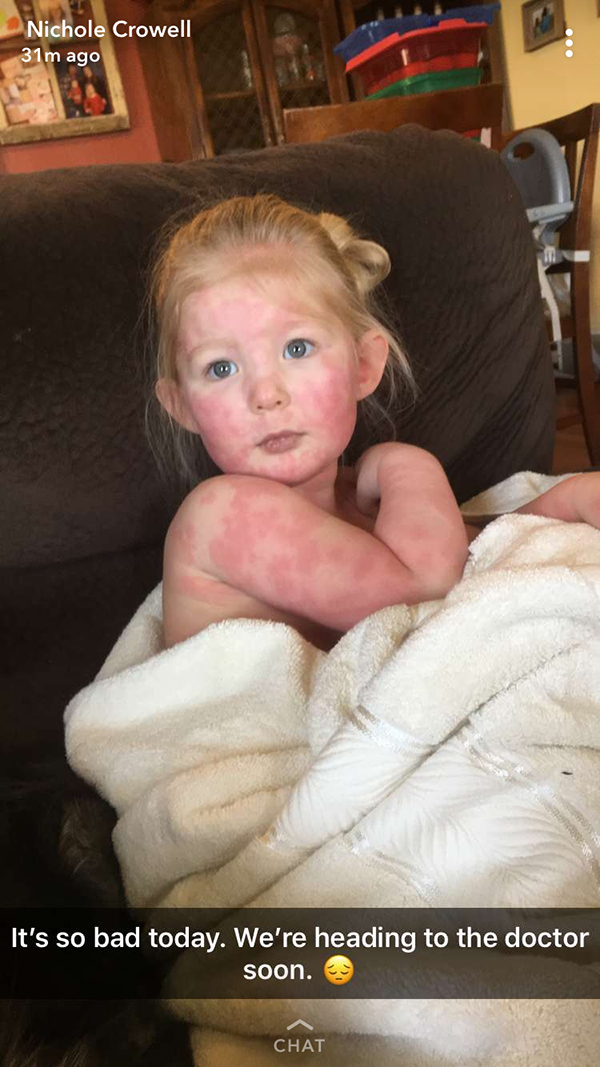
|
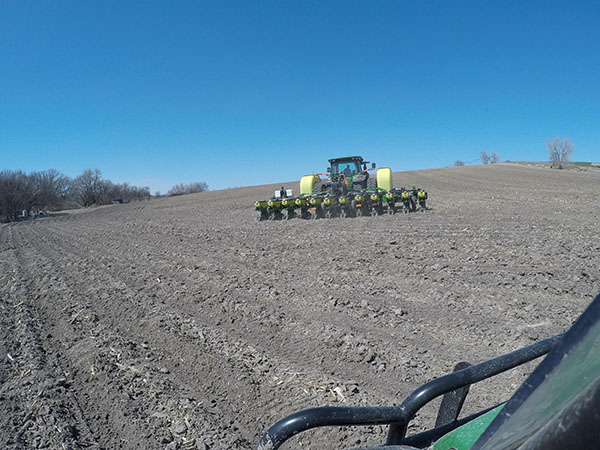
|
Finally some seed in the ground. It only took 5-6 hours to get all the kinks out. I did finally get rolling later that afternoon on soybeans as well. On April 27th. A month after I wanted to try and have some soybeans in the ground.
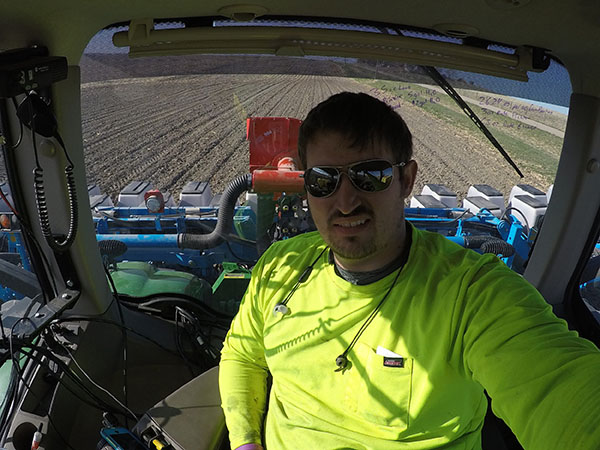
|
Late nights and rough fields make for long days away from my girls. It always brings joy to the day when they are around.
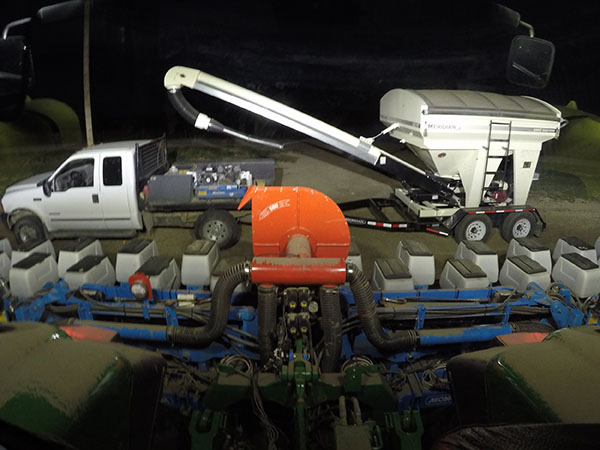
|
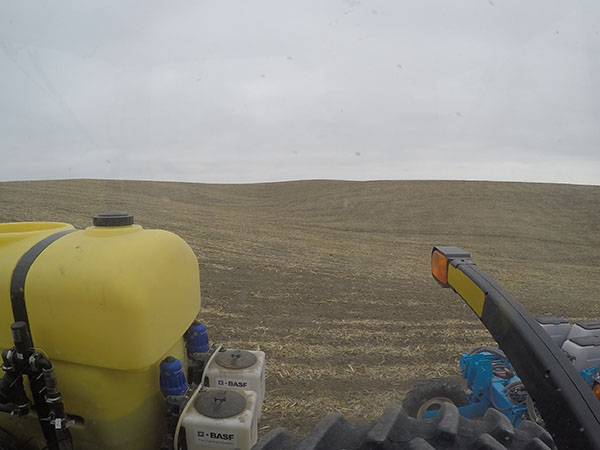
|
I was close enough to home this night the girls brought me supper and played on the gravel road.
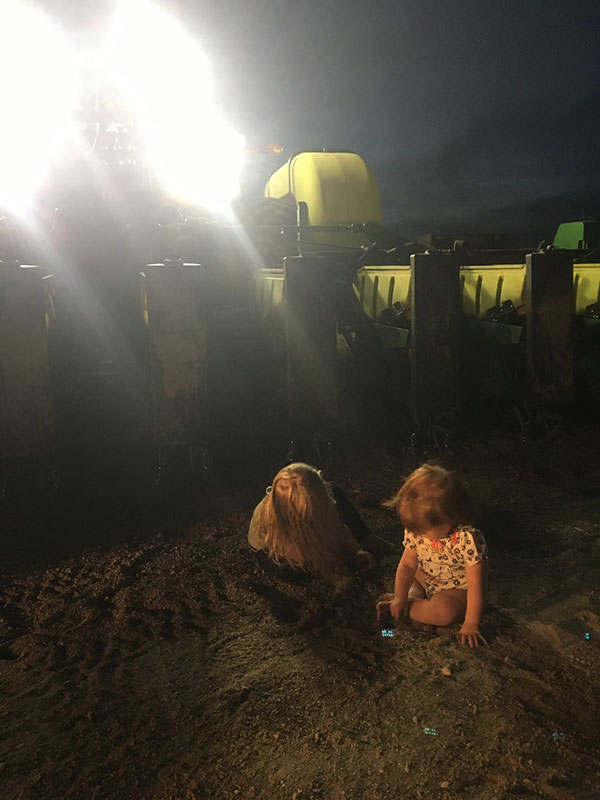
|
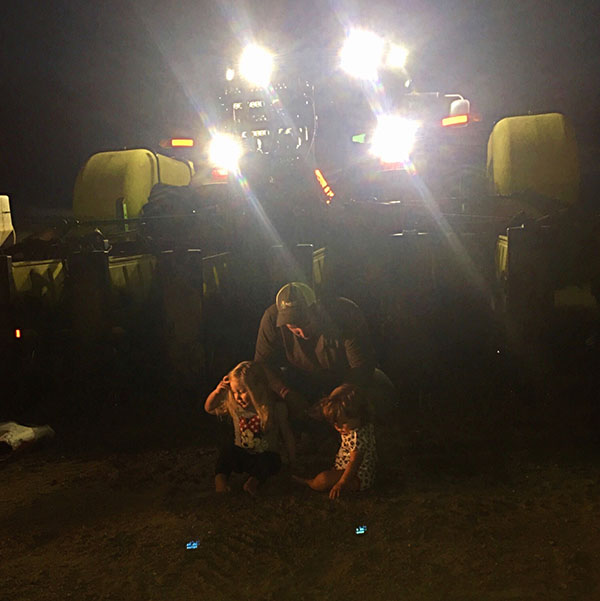
|
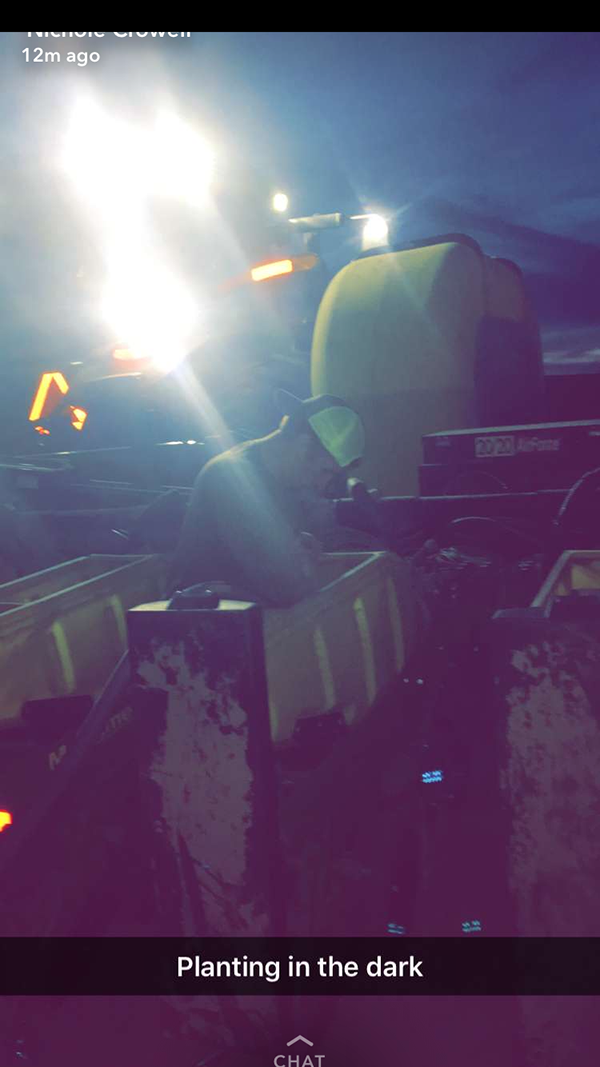
|
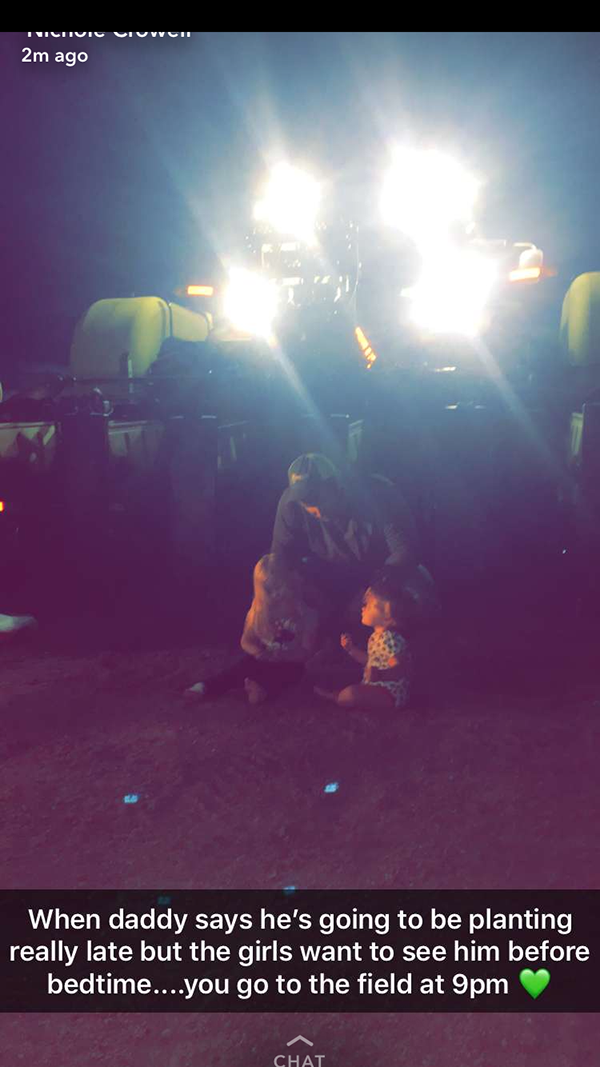
|
Pulling up to the field I live in there was a cool mini rain cloud with a rainbow.
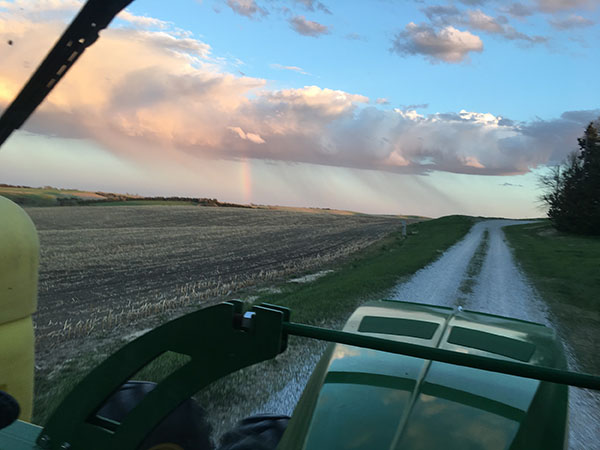
|
My productivity probably drops 15-20 percent when I'm at the field we live at, but it's worth every second to be close to my girls during the day. My youngest turns 1 this month and is growing like a weed.
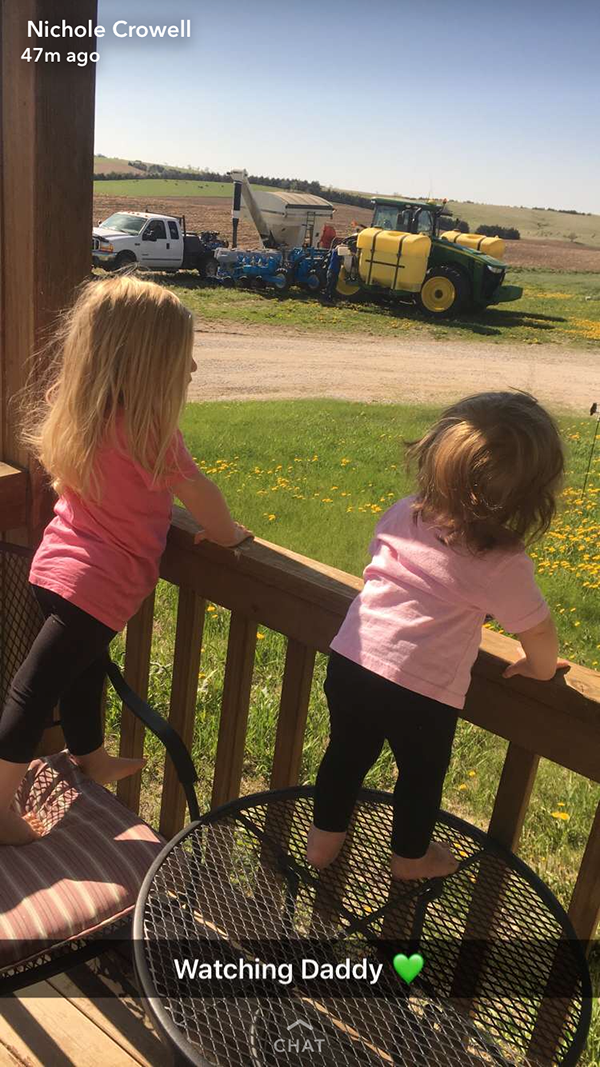
|
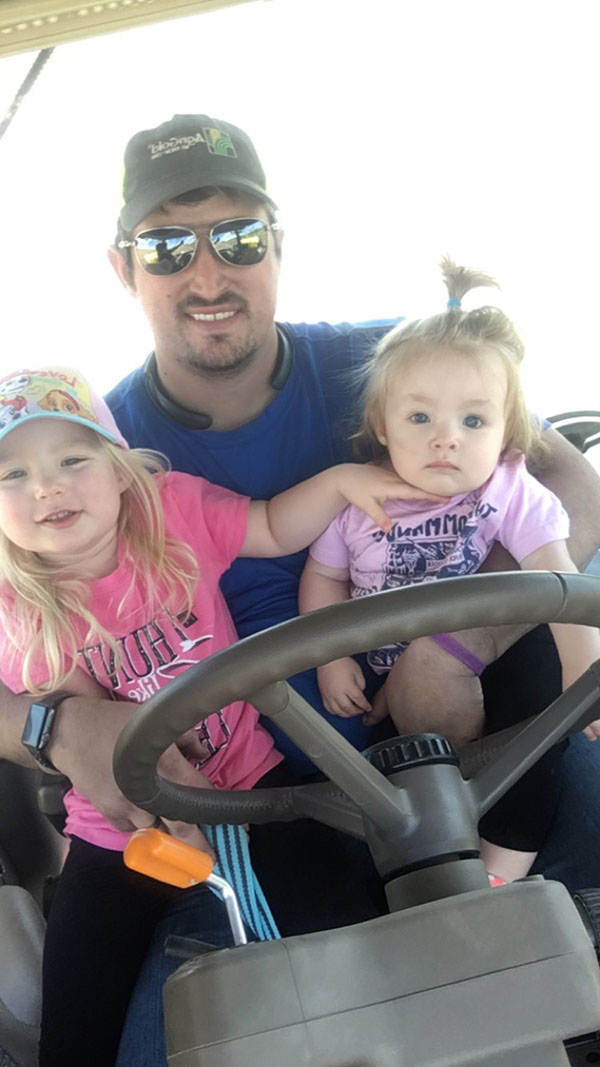
|
We are doing checks in most every field to compare our new and old ways of doing things, even if it's just a round of no starters or other fertilizer. You need to know what is and isn't working for your farm.
Since I last posted we have been busy putting finishing touches on the planters. We still have one to go through, but will possibly be getting a tractor off a strip till rig soon to put on it.

|
This looked clear when I took it but it is our plumbing for the furrow jets on right and the ability to switch between 3x2x2 Martins and our old way off the back of the planter.
This is how our 24 row is set up.
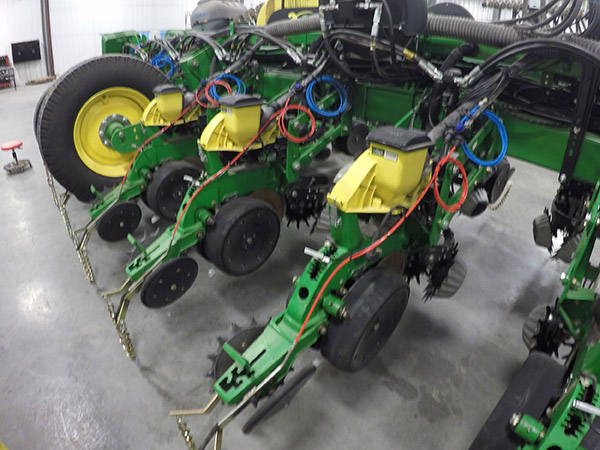
|
I got the privilege late last month to spend three days in my parents' barn all by myself in quarantine. Because I didn't want to get my family sick with the influenza A and strep throat that I had come down with.
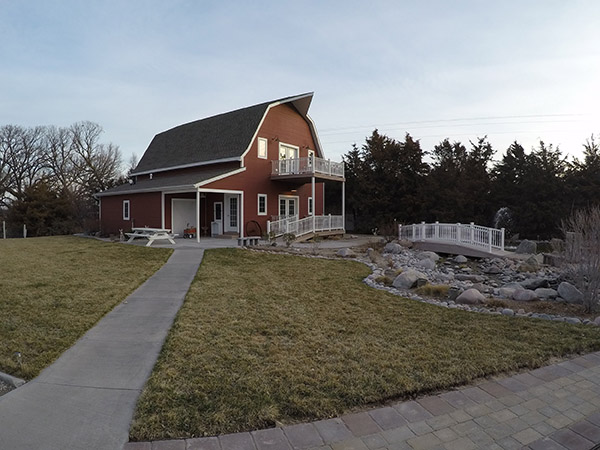
|
I also have spent a good amount of time this past month working on planting prescriptions.
This is an example of a soybean prescription I wrote that is variable rate from elevation only. There is a center pivot on this field and one in the bottom left corner as well. The red is the bottoms of the field at 130,000, yellow are the side hills and smaller hills at 145,000, and green are the tops of hills and steeper parts at 160,000.
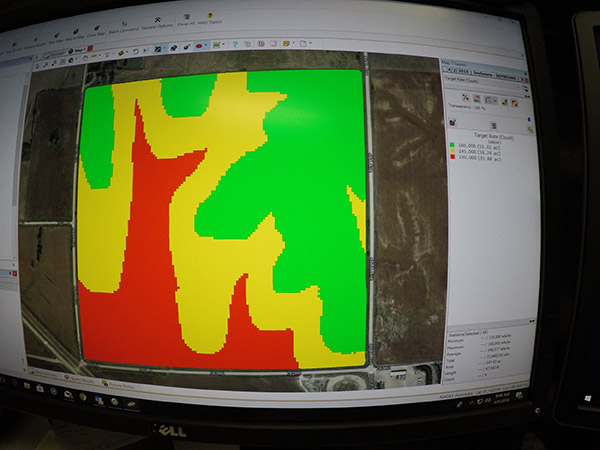
|
We are starting to have problems with white mold here so going thinner in the bottoms may help with that. And at thicker populations, the beans in the bottoms tend to get tall and fall over costing us yield in those areas. We are looking to mitigate this. Last year we flat rated populations at 160-170,000.
We have also been trying to get into the field and strip till when there isn't snow on the ground. I'm typing this on April 11 and we are due 2 to 4 inches this weekend in a storm, based off the latest predictions.
I realized I haven't really included many pictures of dad so here he is.
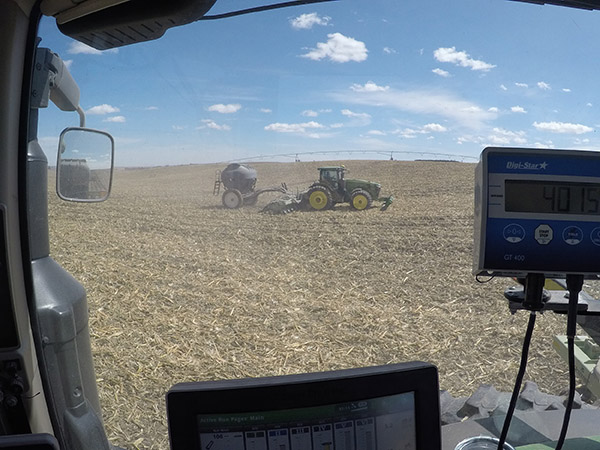
|
This is some of the stripping we did today. We are doing 24 and leaving 24 so we can come back later with a different blend of fertilizer and check side by side.
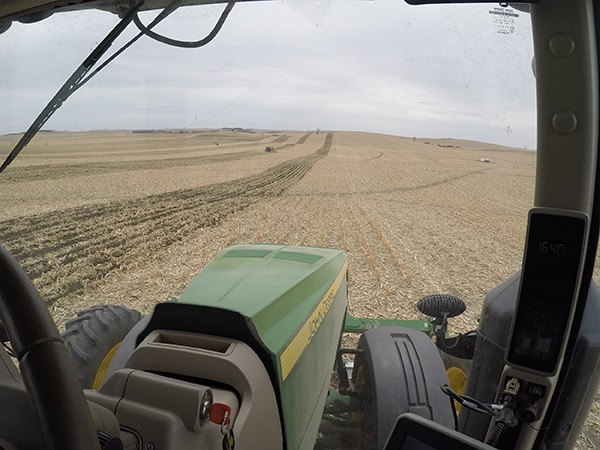
|
The girls came and rode with me today too. It was great to see them before bedtime.
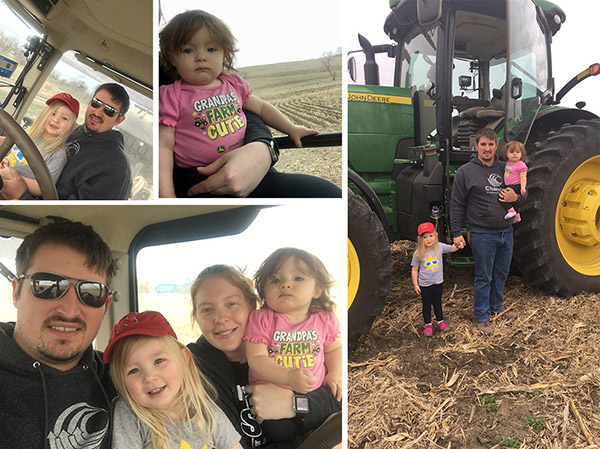
|
This is some of Mom's dry erase marker artwork that I haven't erased from harvest when this tractor was on a grain cart.
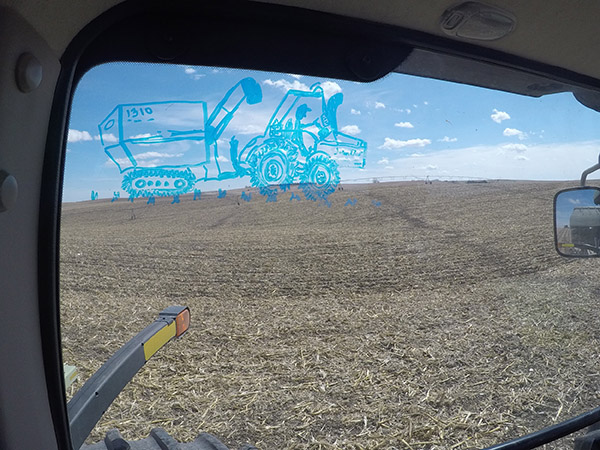
|
This is what we will be working on in the coming weeks. This is our setup for treating soybeans and corn.
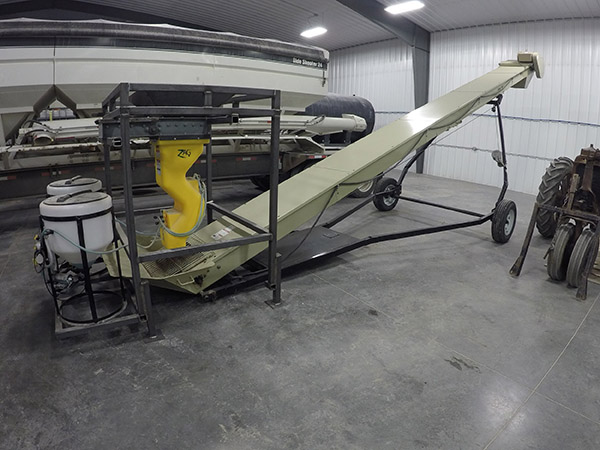
|
This is our shop ornament that was partially in the last picture. It's a Farmall F-20, the first Zoerb tractor. Dad and I (mostly Dad) have been working on restoring it.
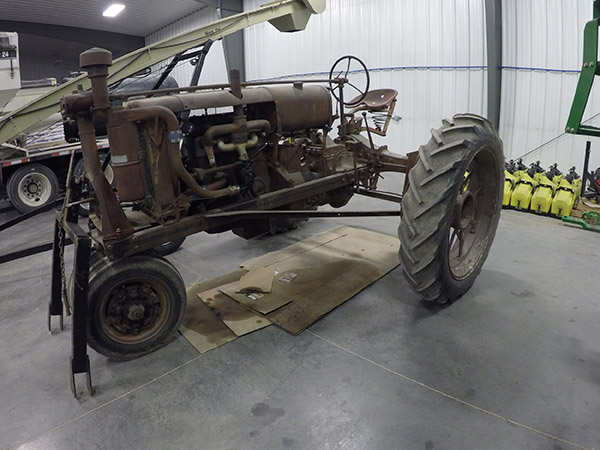
|
This is a picture of my Mom's parents, Bob and Kay. Grandma passed away three years ago in March and Grandpa passed on the second of this month. This a photo of them from my wedding five years ago when they won "couple who has been married the longest". A few days ago would have been their 62nd anniversary.

|
Since I last posted I havnt been at the farm much but I still have many travels to report on. Febuary and early march have been the month of Meetings and confrences.
The day following my last post submission date we left for a trip to Washington D.C. with the Nebraska Corn Growers Association. We were in DC from the 12-16 meeting with the National Corn Growers Association, our own State Representatives and Senators, and many other lobbiest groups that work on agricultural issues. This was a great experience and very informative on the processes of Washington. We brought along my mother in law to watch our girls while we were in meetings. These are some or our pictures of our journey down the National mall. The girls did very good on their first flights.

|

|
I was then back for 2.5 work days before leaving to go to Baltic SD for an AgPhD meeting for 2 days and on the way I picked up a new to us conveyor for when we treat our own soybeans this spring.
We then left the morning after I got home to drive out to the Commodity Classic in California, the way out consisted of a 2 day drive where we drove 1450 miles in around 24 hours of road time. We had to hit the vegas sign on the way through.
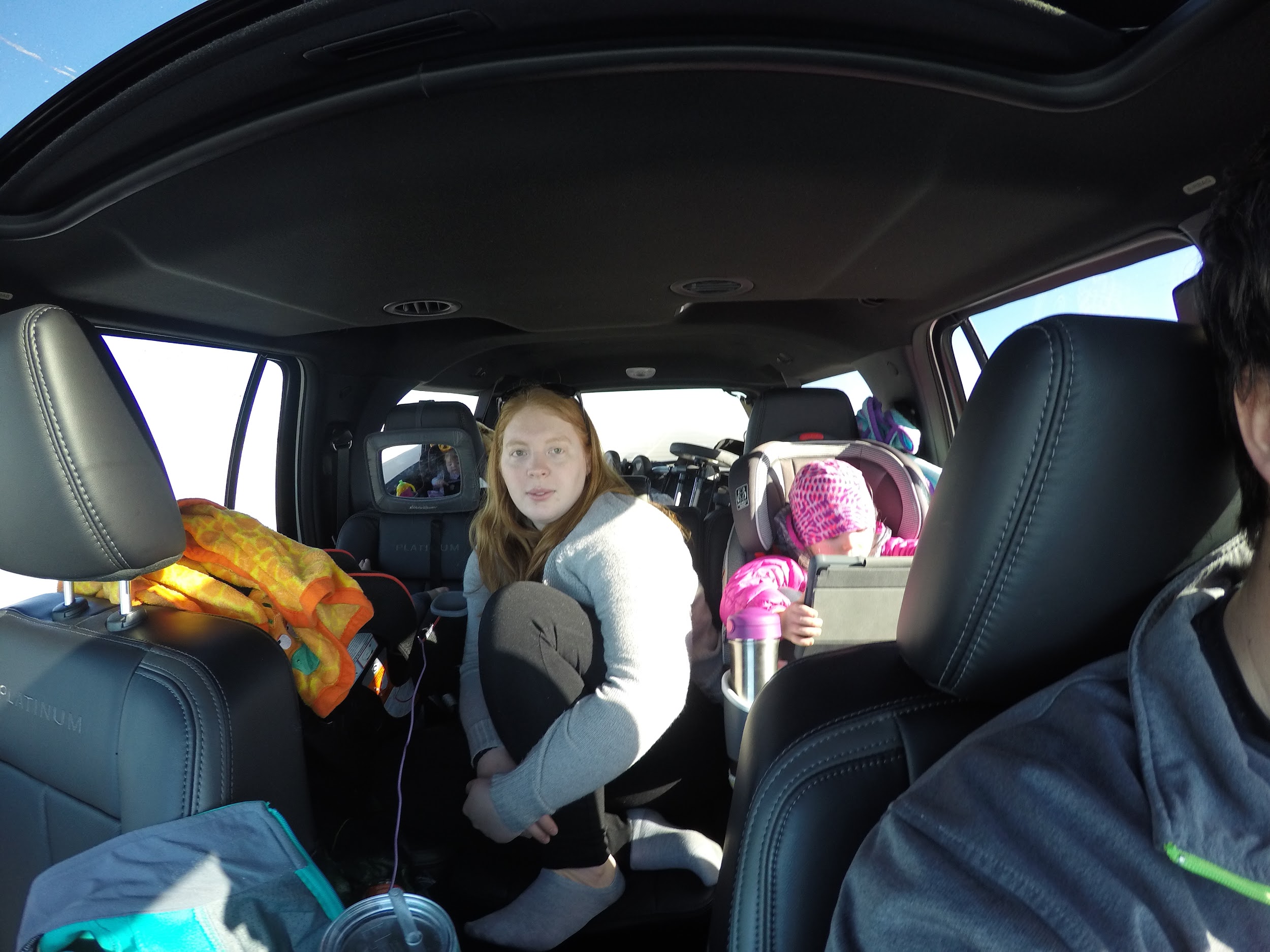
|
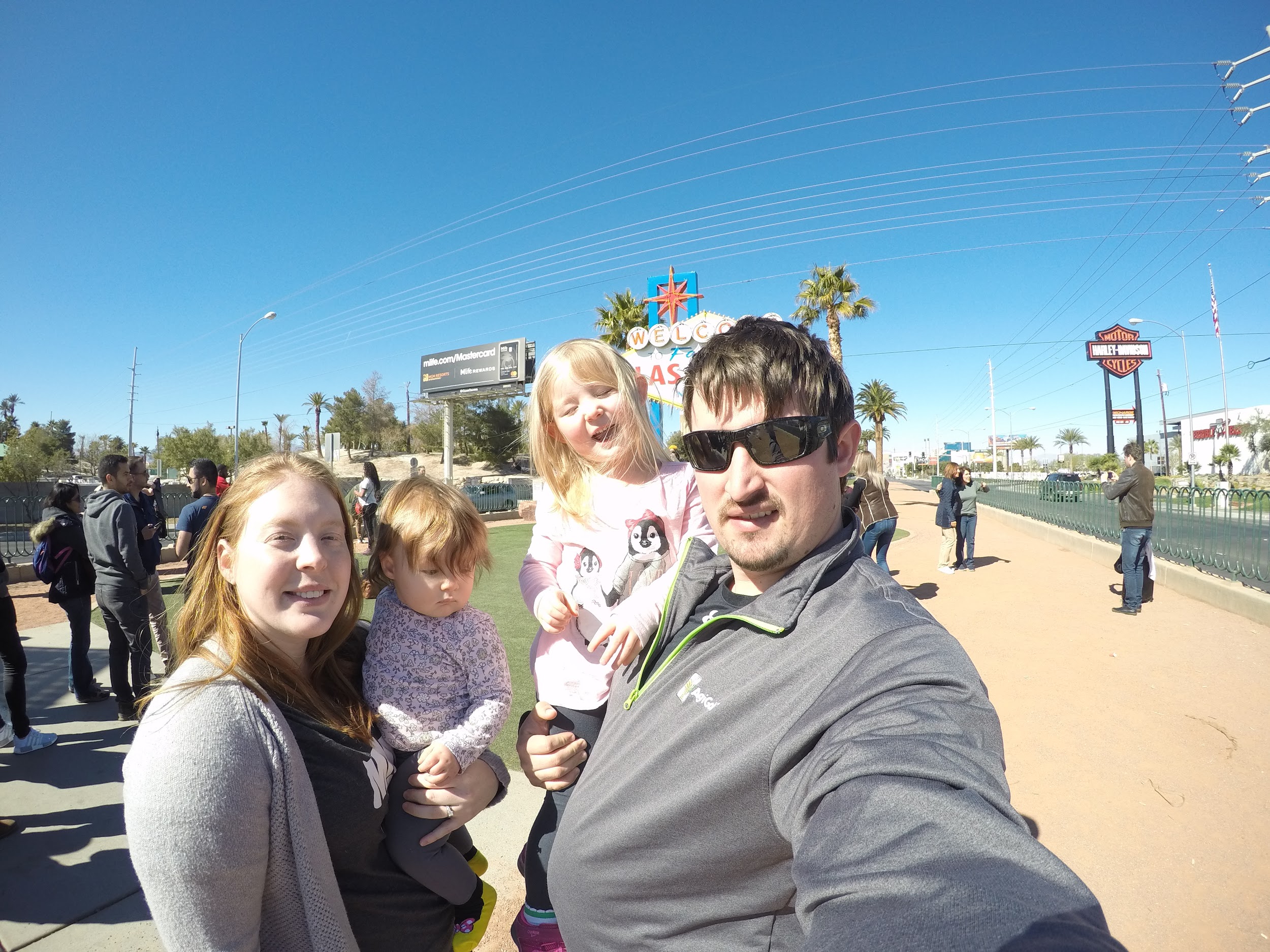
|
We then spent the day before the show at disney with the girls.
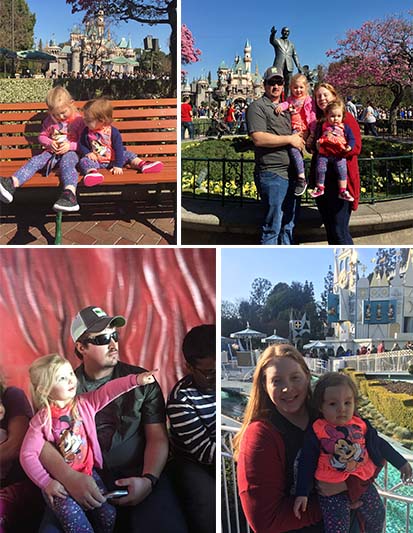
|
I then spent the next 3 days at the show checking out the booths and speakers, getting the opportunity to meet Pam Smith from DTN/PF and do a quick interview one day. This picture is from the opening cerimony when Sec. Sonny Perdu was speaking.

|
The night before we left we made it to the ocean, it was not warm.
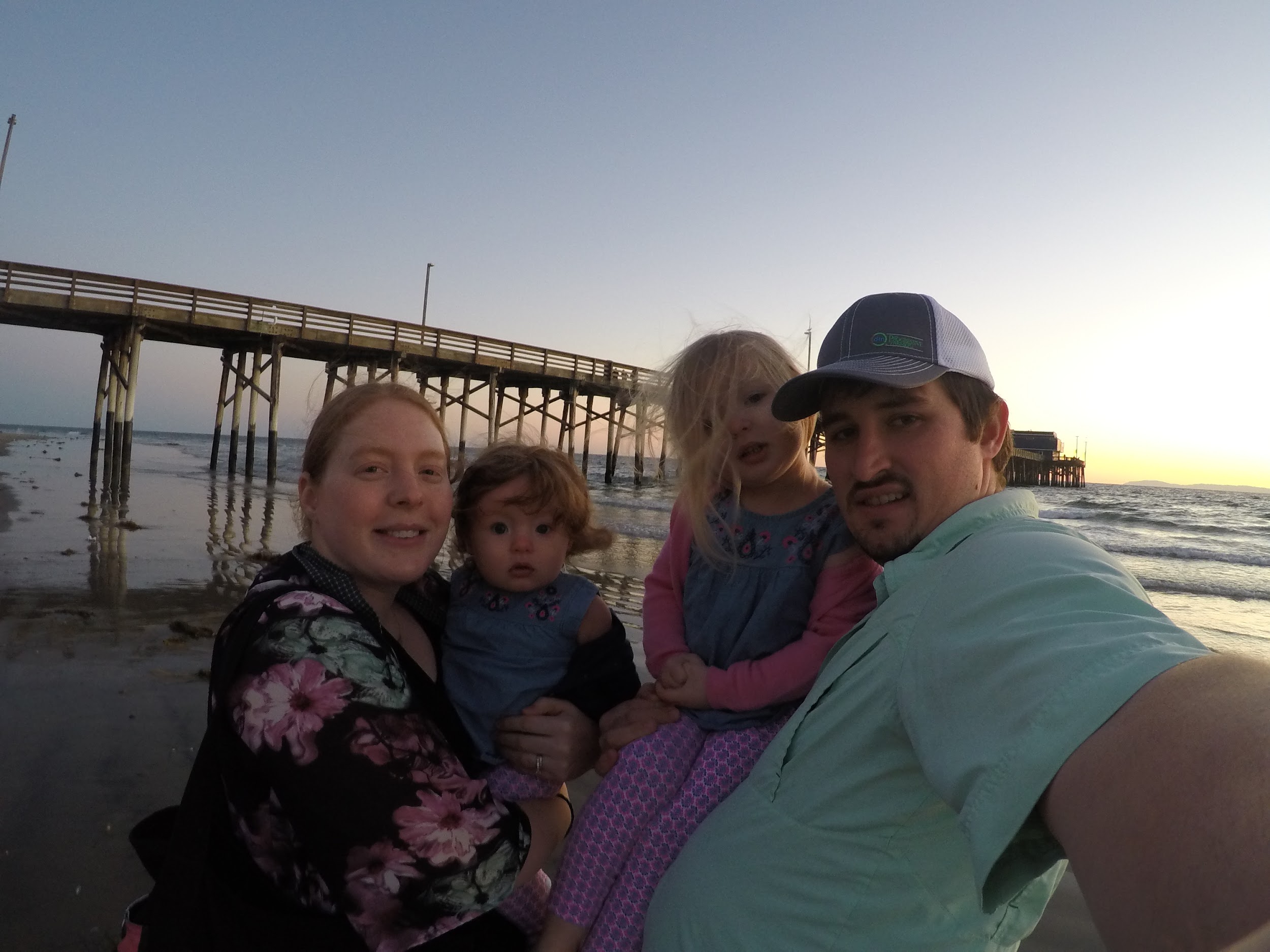
|
Our journey back took 3 days where we stopped at the Hoover Dam one day and the Grand Canyon and 4 Corners the next before the last run home.
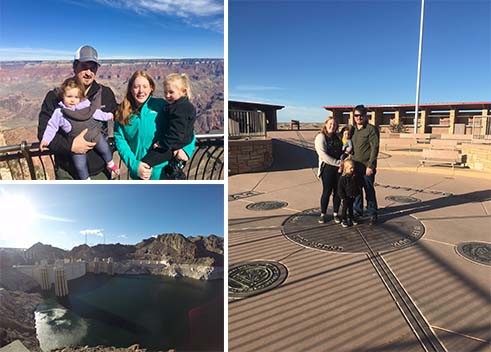
|
Since I have been back we have been working on planters unloading grain bins at fields and picked up our last soybean grain bag. We have also started calving and I hope everyone else who is doing that now is having better luck than us. The pictures below are of some of the modifications we have made to our "research" 12 row planter before we go full scale on our 24 row as well.
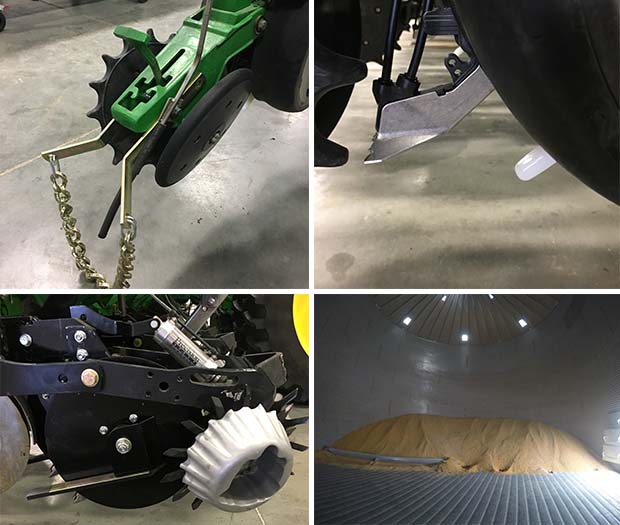
|
I now look forward to being on the farm because as fun as It is to be away on trips we have much to do here before the planters start rolling next month. Best wishes to everyone following our farm journey.
Most of the things you read in the blog posts will be from me, Ethan, but my dad, Dale, will contribute information too.
October 26–a day that destroyed record crops in Nebraska and made it a harvest we would rather forget. A storm with 50 mph winds blew over corn and shook the ears off all at the same time. We saw anywhere from 5- to 10-bushel loss in better, more resilient hybrids. But in other hybrids there was 50 to 100 bushels on the ground. This caused our harvest to be delayed two weeks. Usually we are wrapping up on Halloween, but we didn't finish until November that year because of the storm damage and wet fall weather.
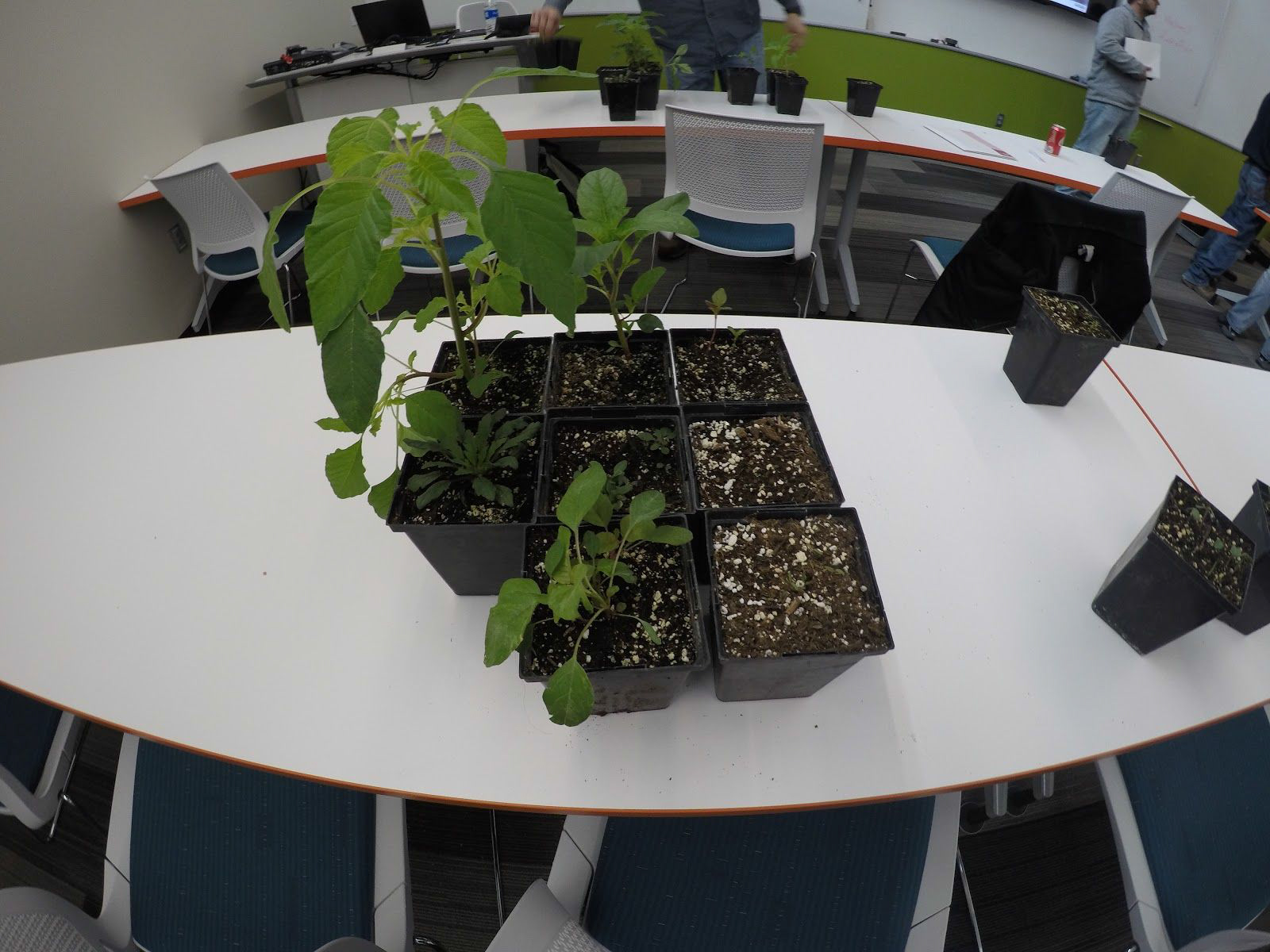
|
Finishing late and the storm damage will lead to another set of challenges this coming year with volunteer corn and trying to stay in our crop rotation. We really had to look for more farmers with cows than we usually do to eat all the corn that had fallen on the ground due to the wind. Also, the cows are staying on the stalks up to two months instead of one like they normally do. It's a slow process to clean up the corn this year. The amounts of corn on the ground are also causing problems with cows. We lost two of our own cows from over eating corn and I have heard many stories from local farmers that have lost up to 80 cows in a week from eating too much corn. The massive amount of corn that fell on the ground has just caused a lot of problems and I'm not looking forward to it potentially causing more this spring with volunteer corn.
My January and early February have been filled with meetings. With at least one a week ranging from agronomy and soil health to ag tech meetings. I've also attended meetings with our local and state Corn Growers Associations. One meeting I attended, was put on by our BASF rep Eric Steiner, with AJ Woodyard, BASF's main soybean Technical Crop Production Specialist. You may have heard of his research on the planting date of soybeans and planting them in February in Illinois. If you haven't heard of him specifically, he posed some very interesting ideas on growing soybeans from planting date and depth to spacing and population. The meeting also had a UNL extension agent to talk about weed identification and control.
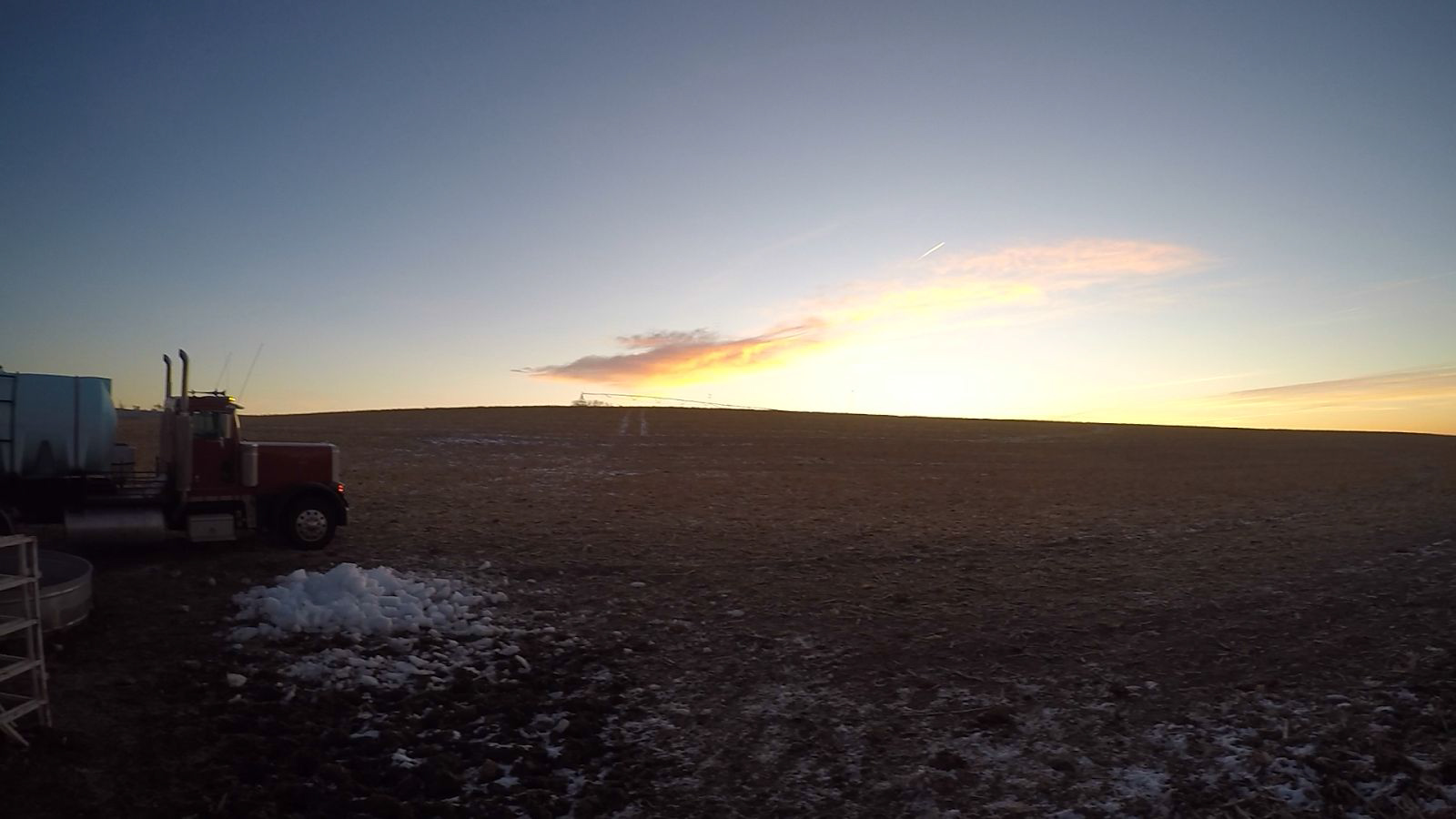
|
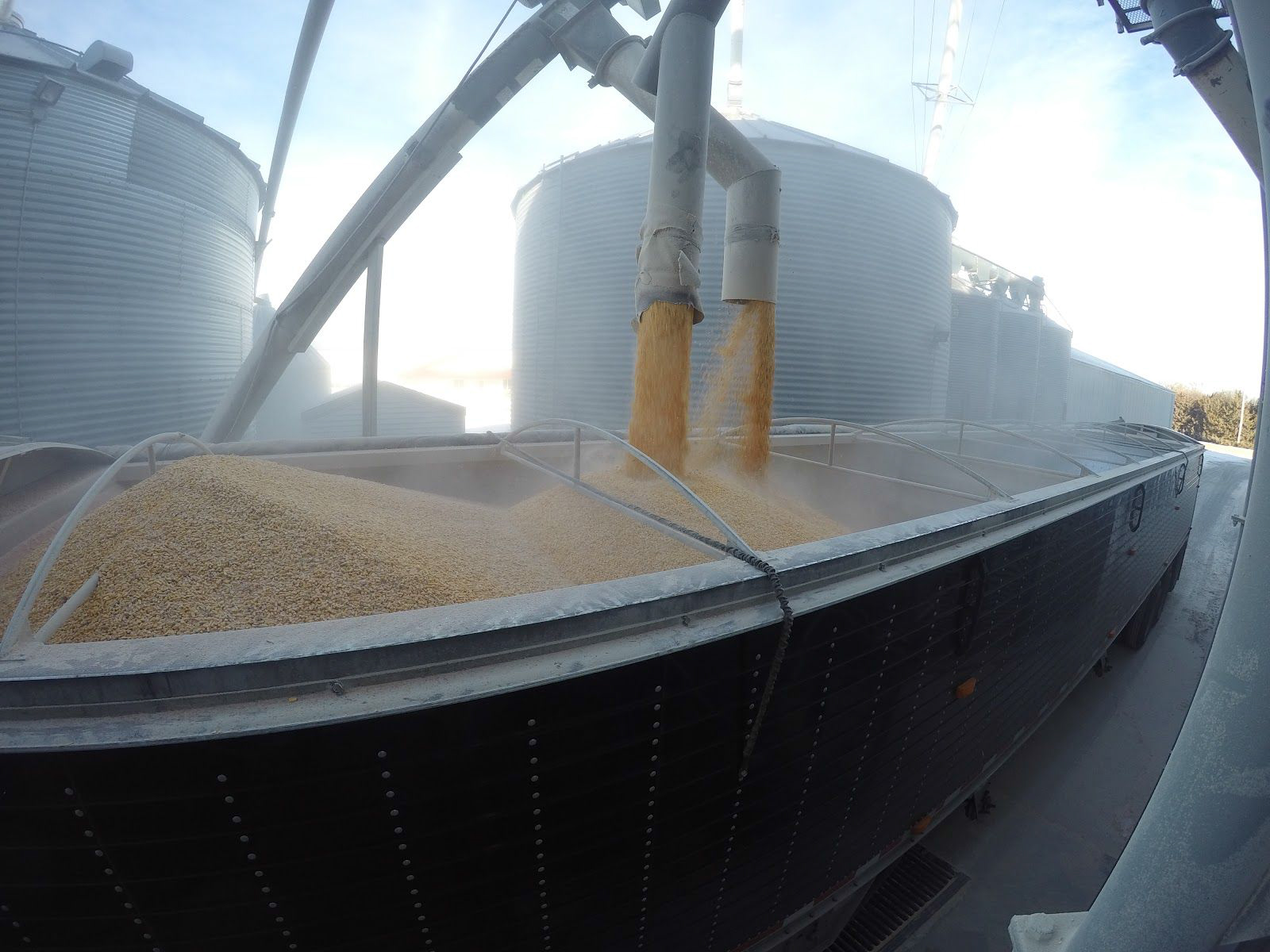
|
We have started getting our equipment ready for spring. One of the main changes we made to equipment this year is to buy a cultivator to help clean up the volunteer corn. Other than that, we are just making small modification to what we are already running. We are running three planters again this year with a 12 and 24, both 30-inch single spacing, for corn and a 12-row twin on 30-inch centers for soybeans, and research on corn. The 12-row corn planter will have some modification made to it to test out different methods for in-furrow fertilizer with the furrow-jet and a Martin-Till 3x2 fertilizer placement.

|
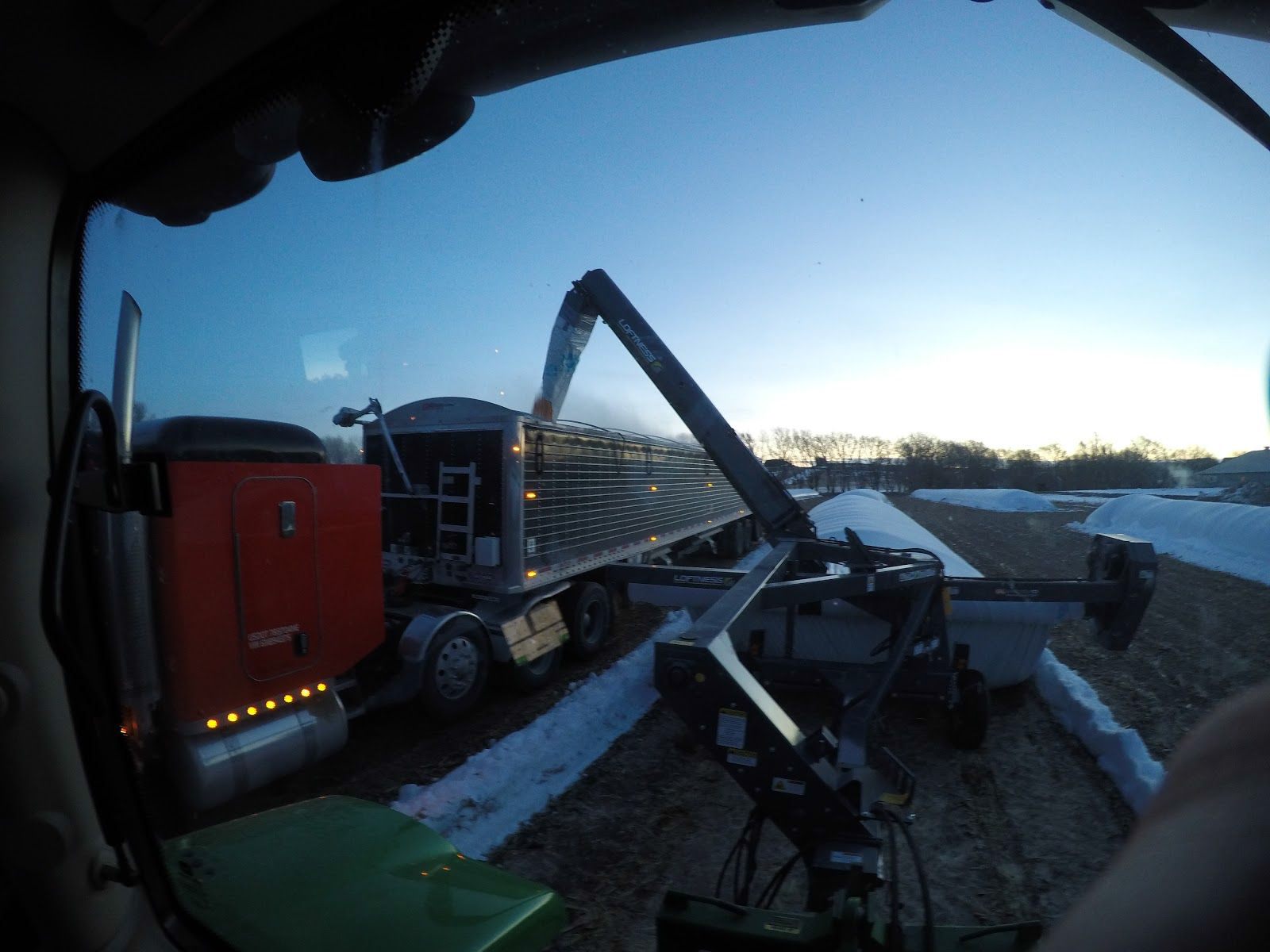
|
We will be running all kinds of tests this year with every field we farm having a test of some form in it. Many of them will start out with planter trials, but there will be different trials with planting populations and plant date on soybeans, and in season fertility on both corn and soybeans.

|
Some of the other things that have been keeping us busy this year are watering cows and hauling grain.
I'll end with a personal note, my wife Nichole and I have two daughters aged 2.5 and 9 months, who are both very active and love the farm life. We currently live in the house my parents did when I was born. My Dad and Mom live centrally located to the ground we farm now. Also, I have one sister who lives in Salt Lake City with her fiancé, and they will be getting married this coming spring.